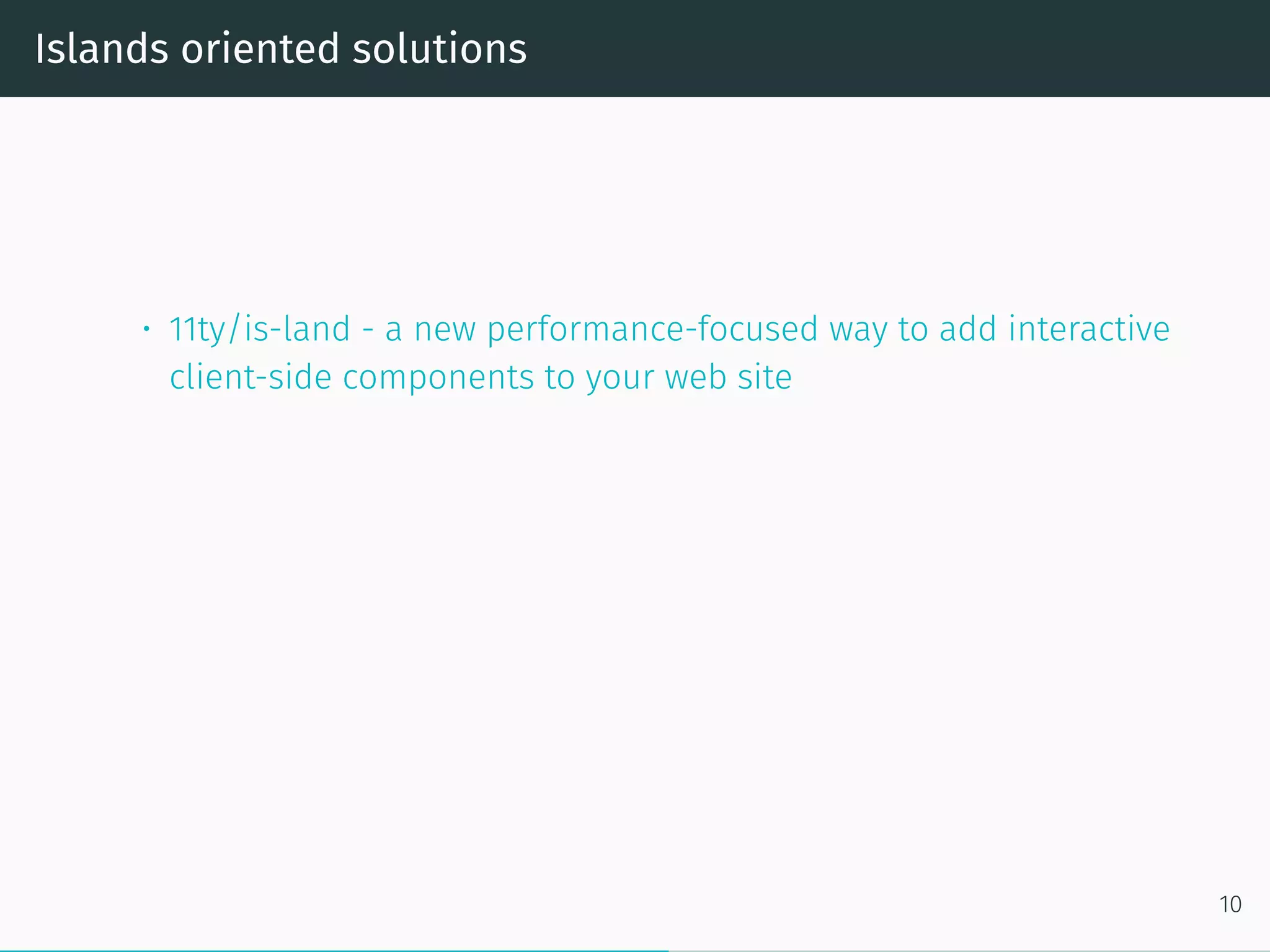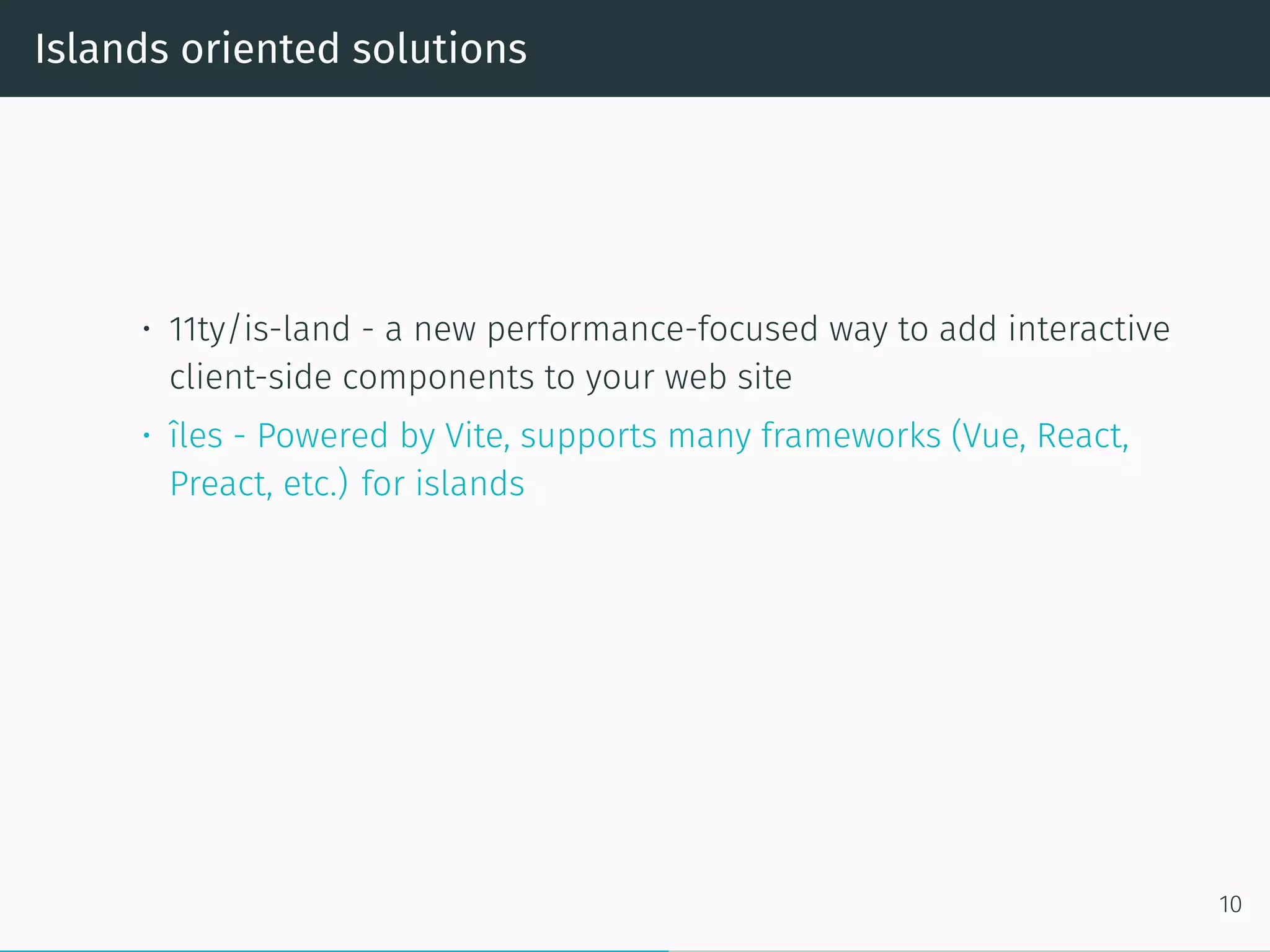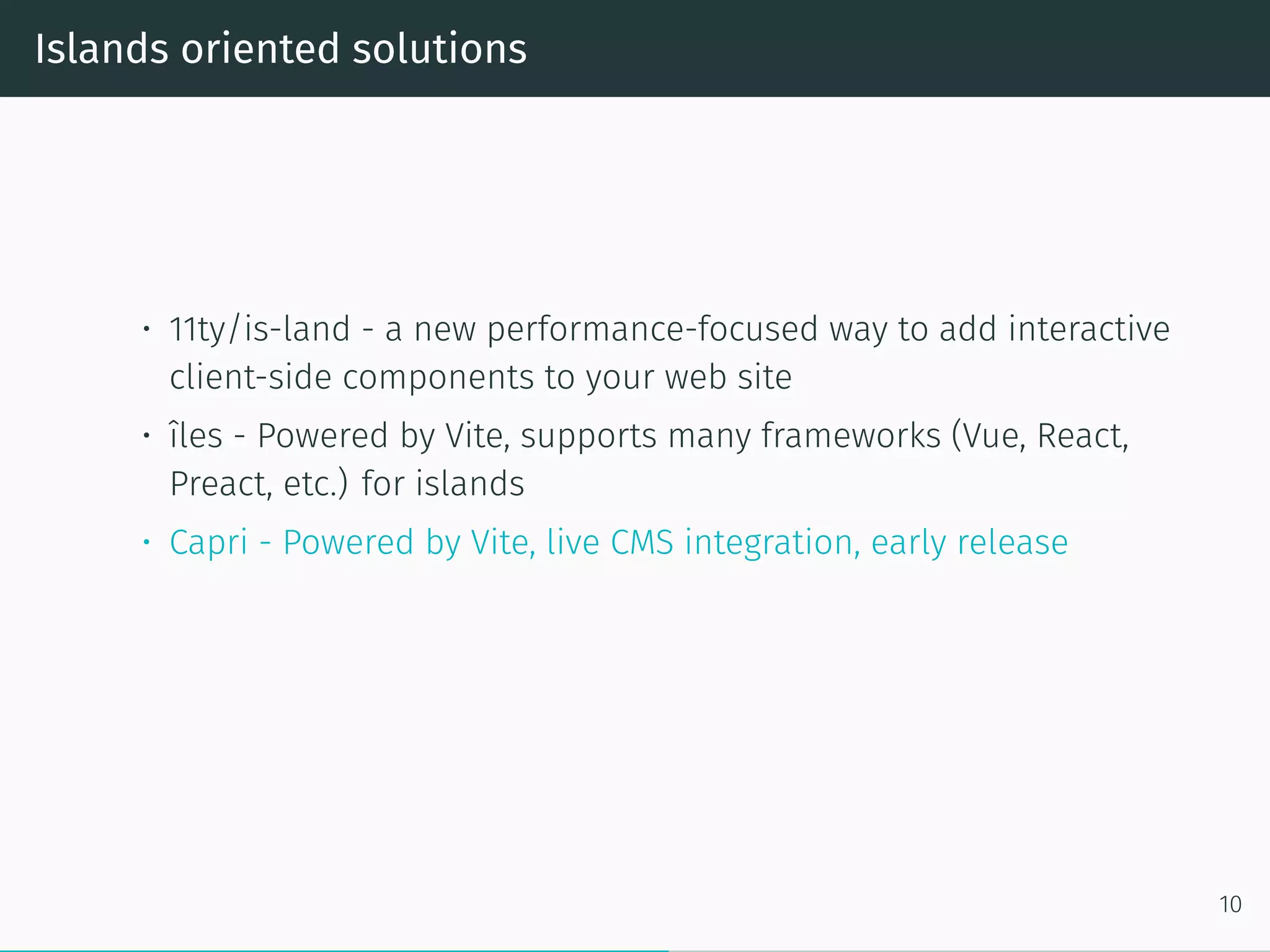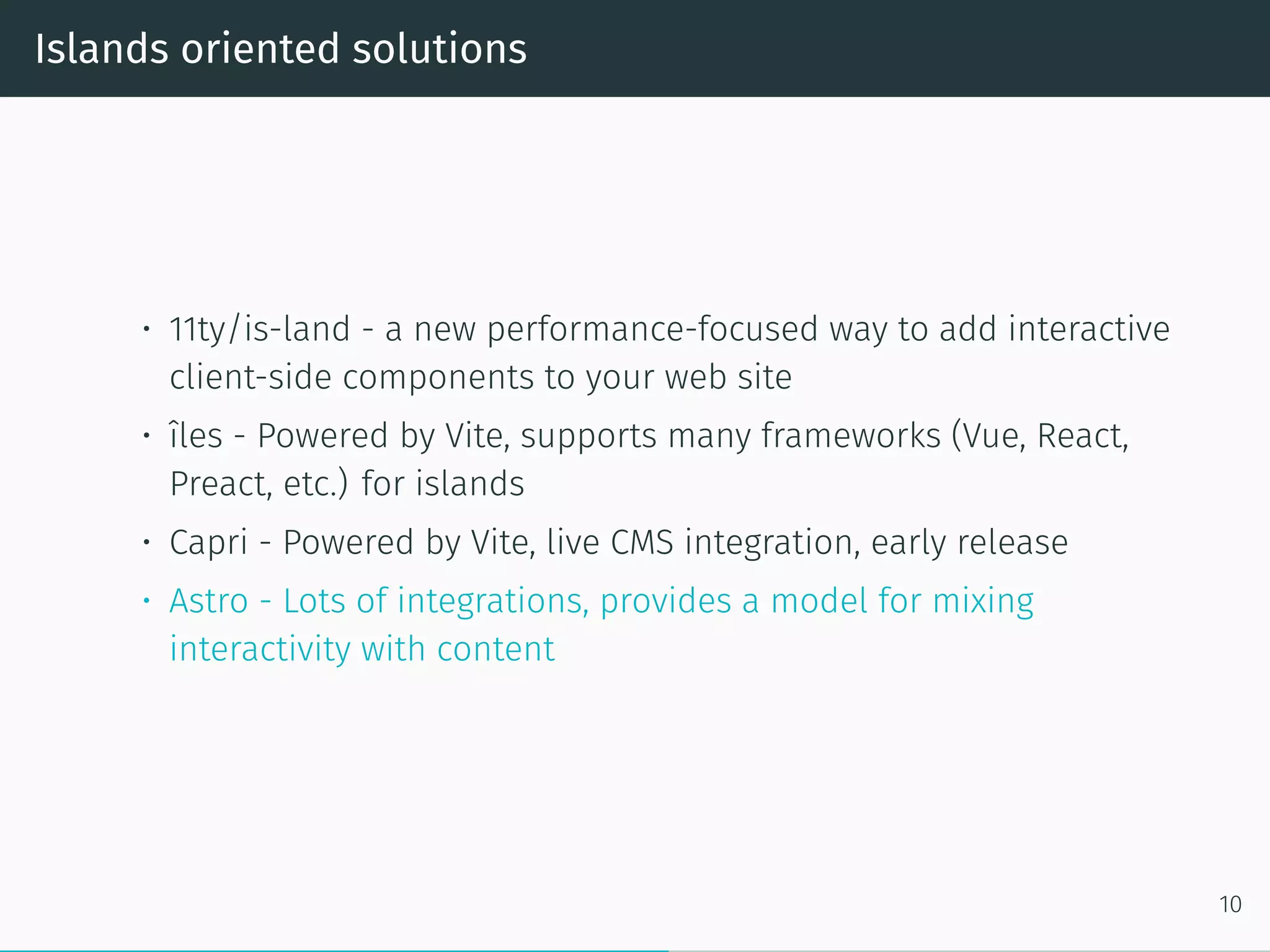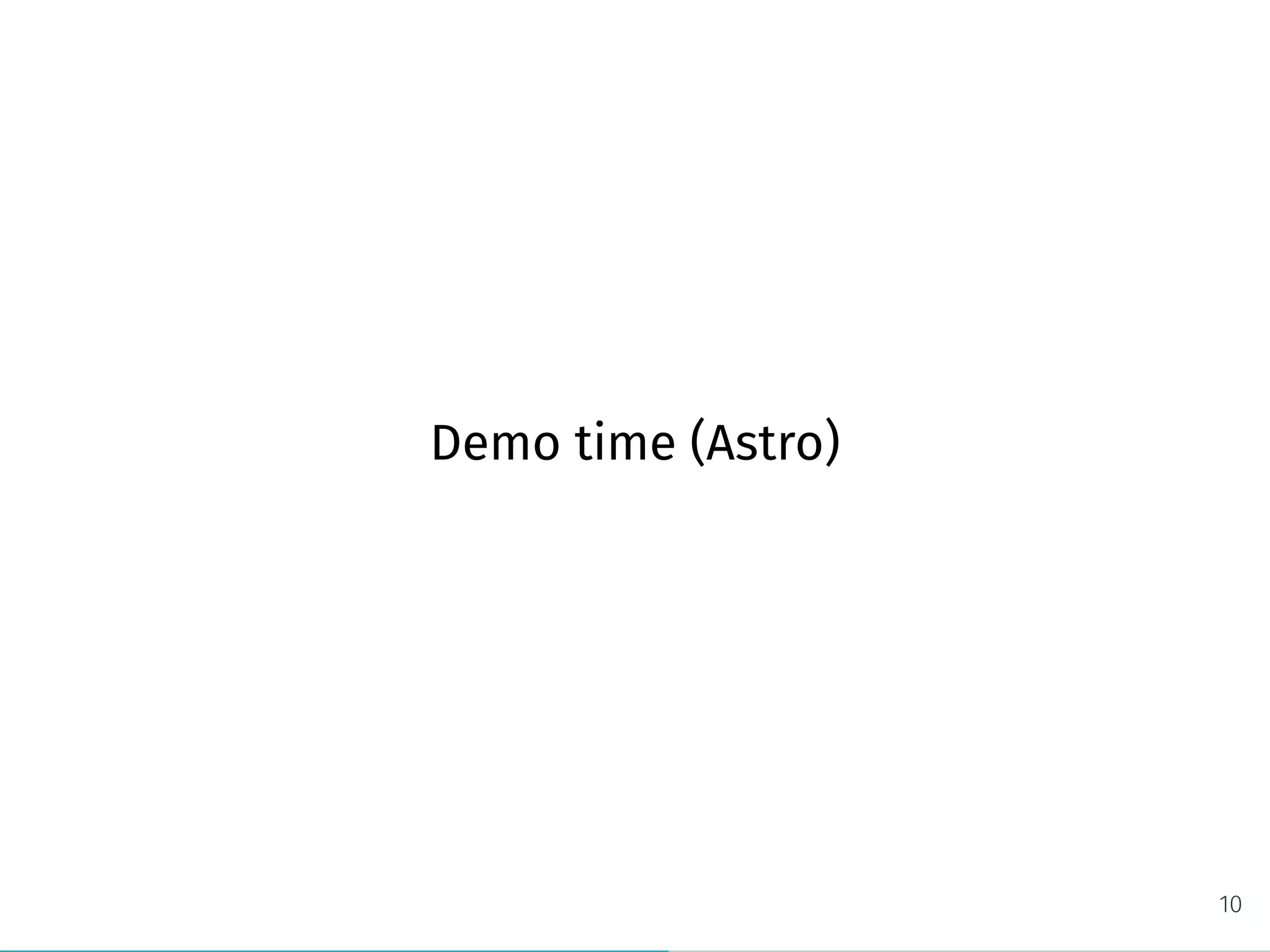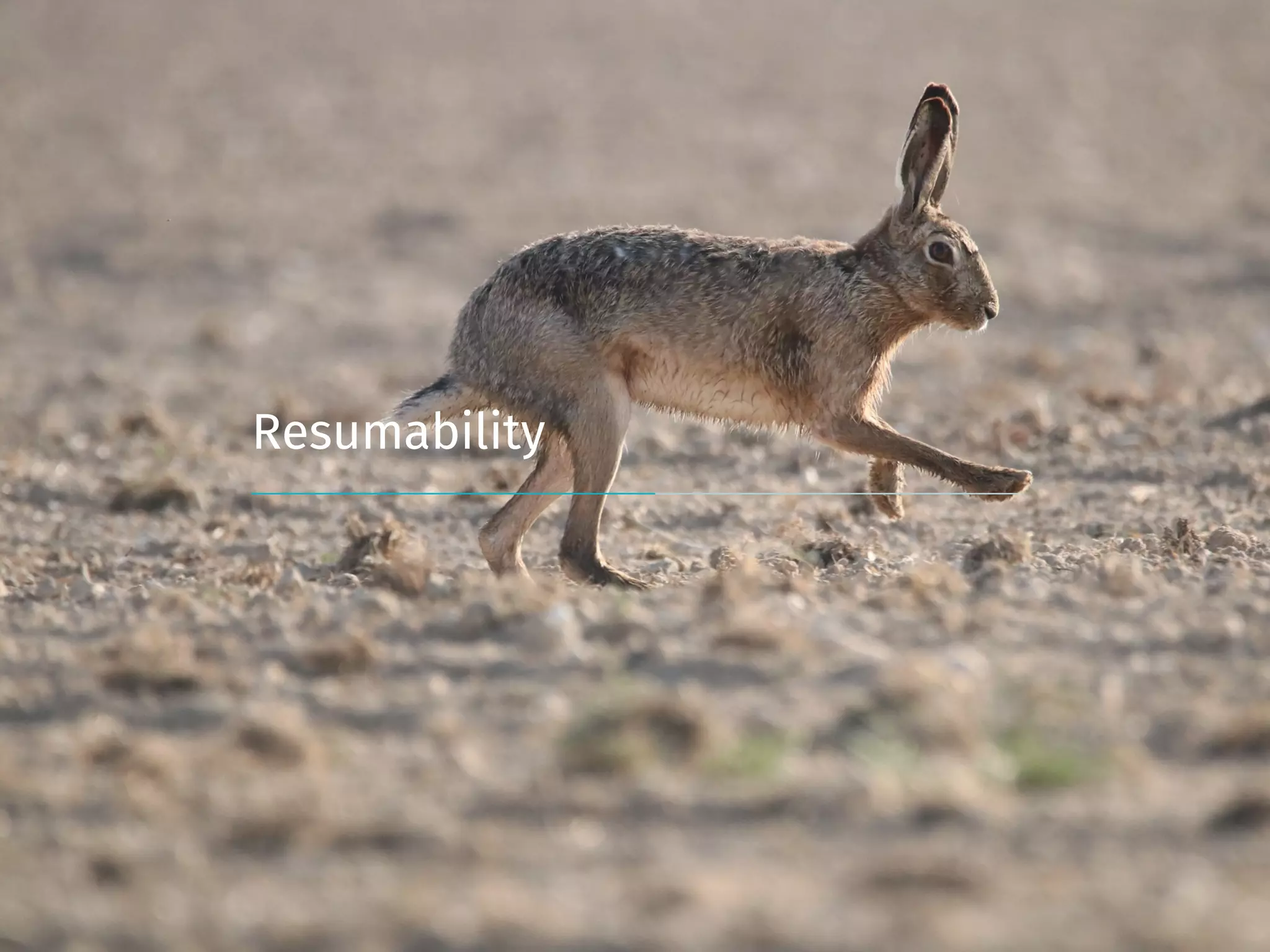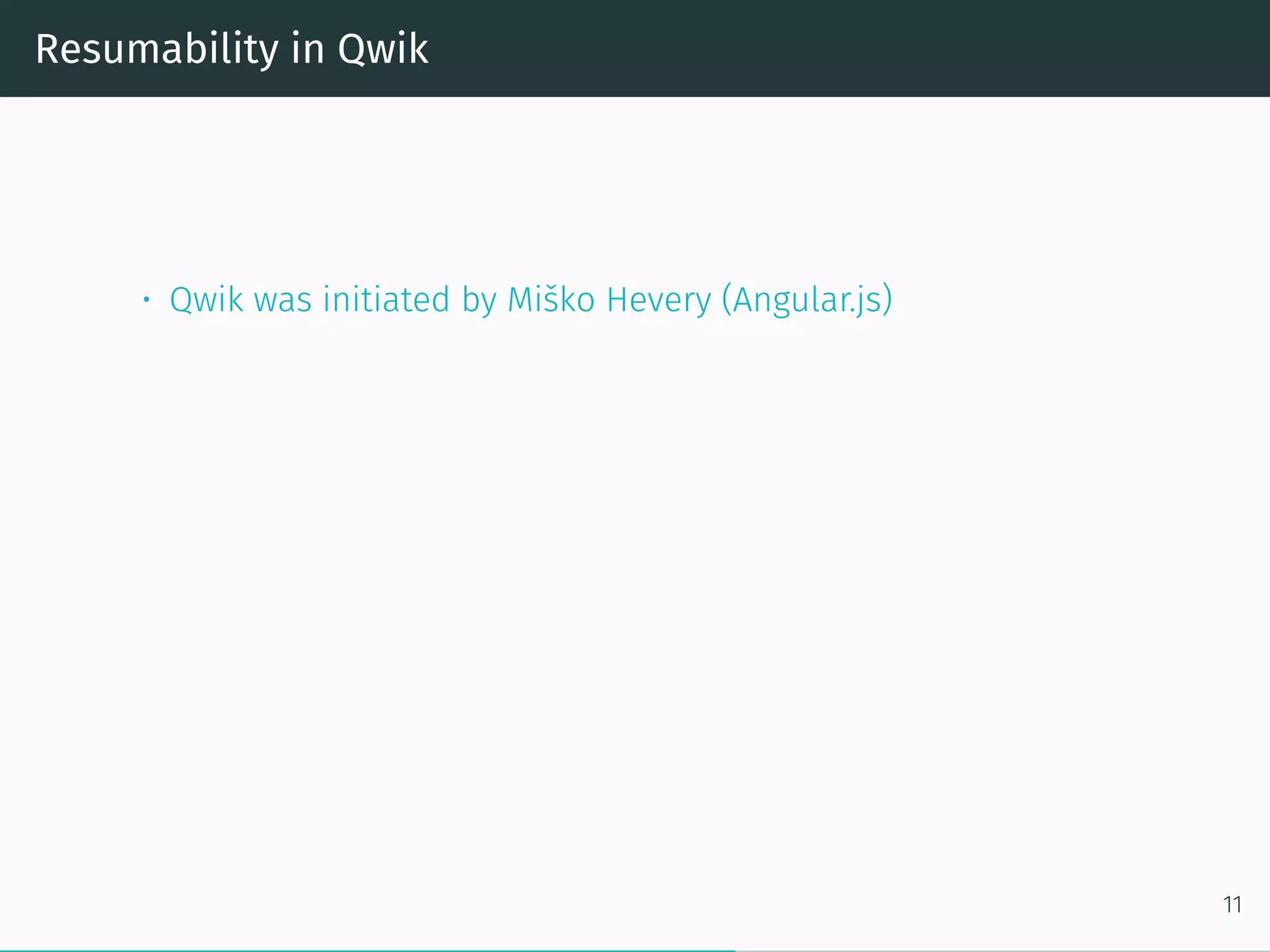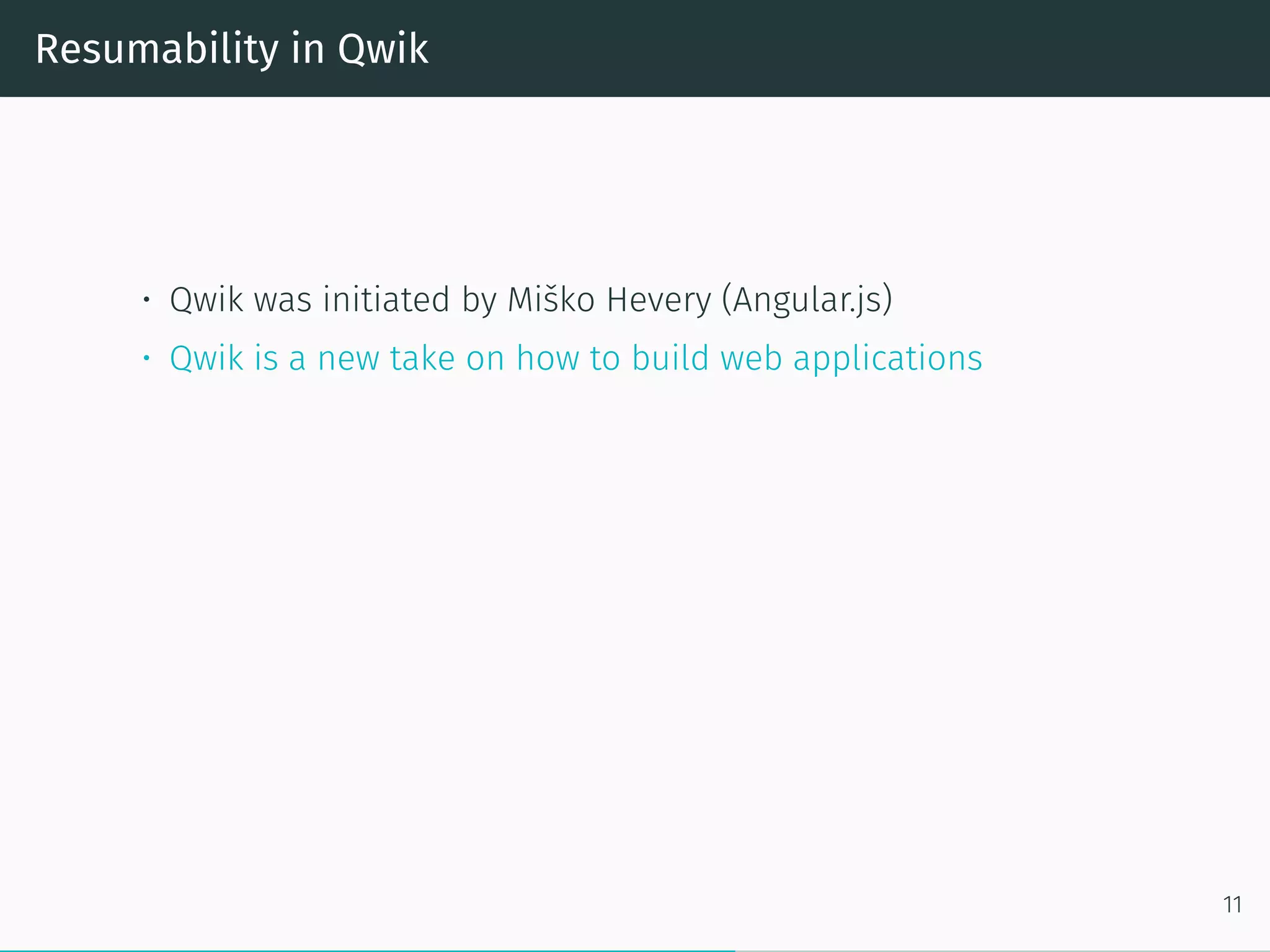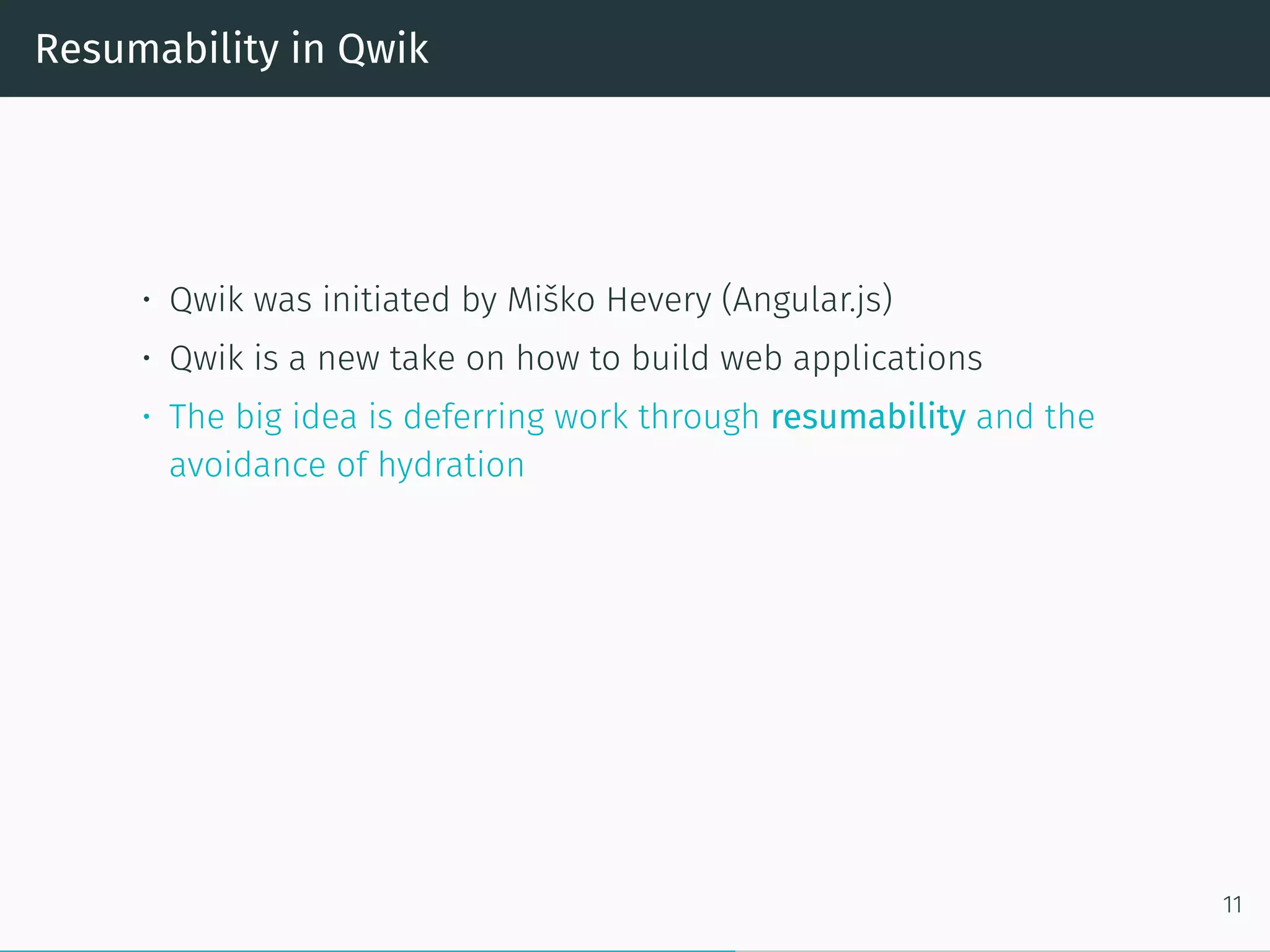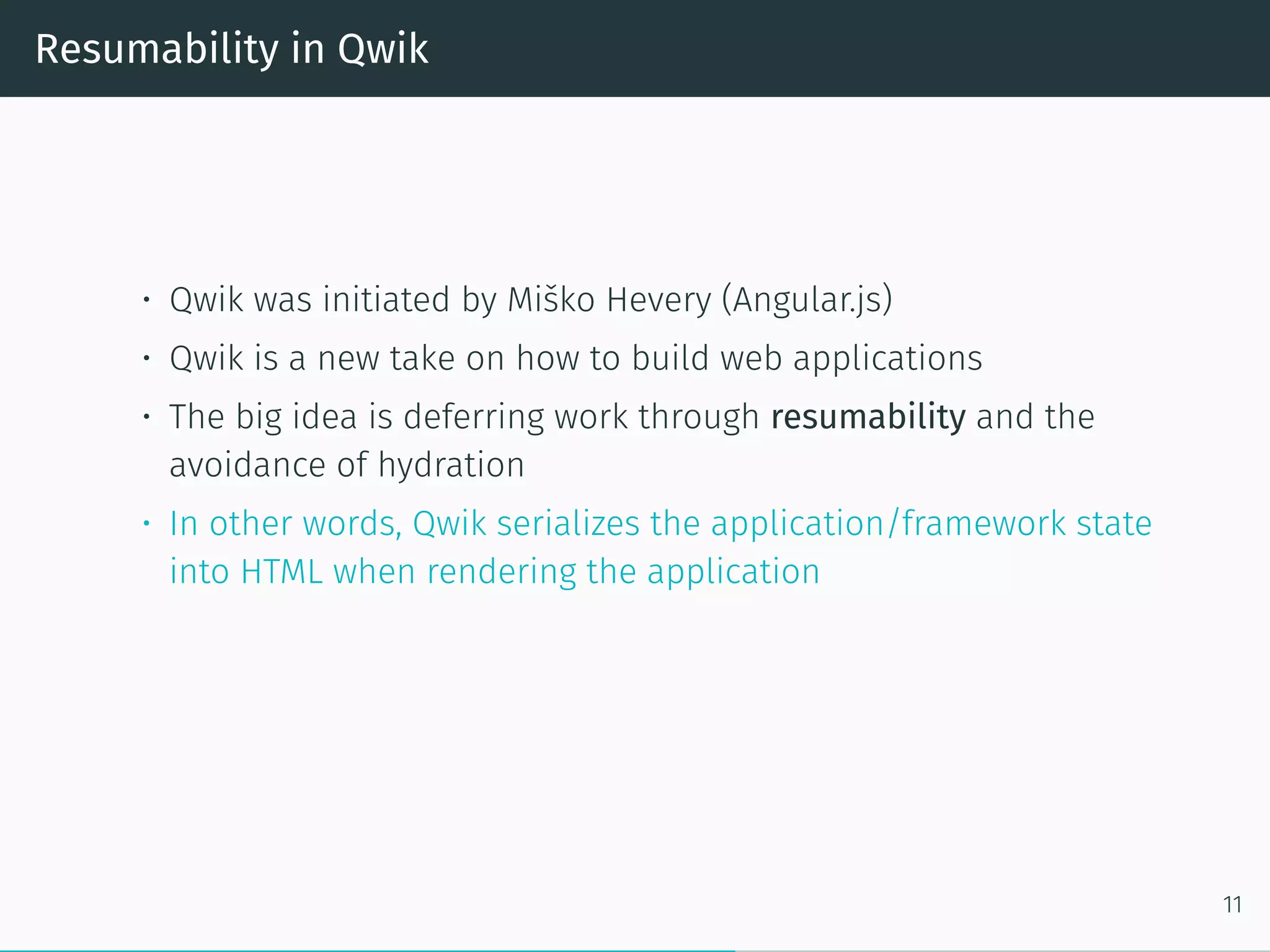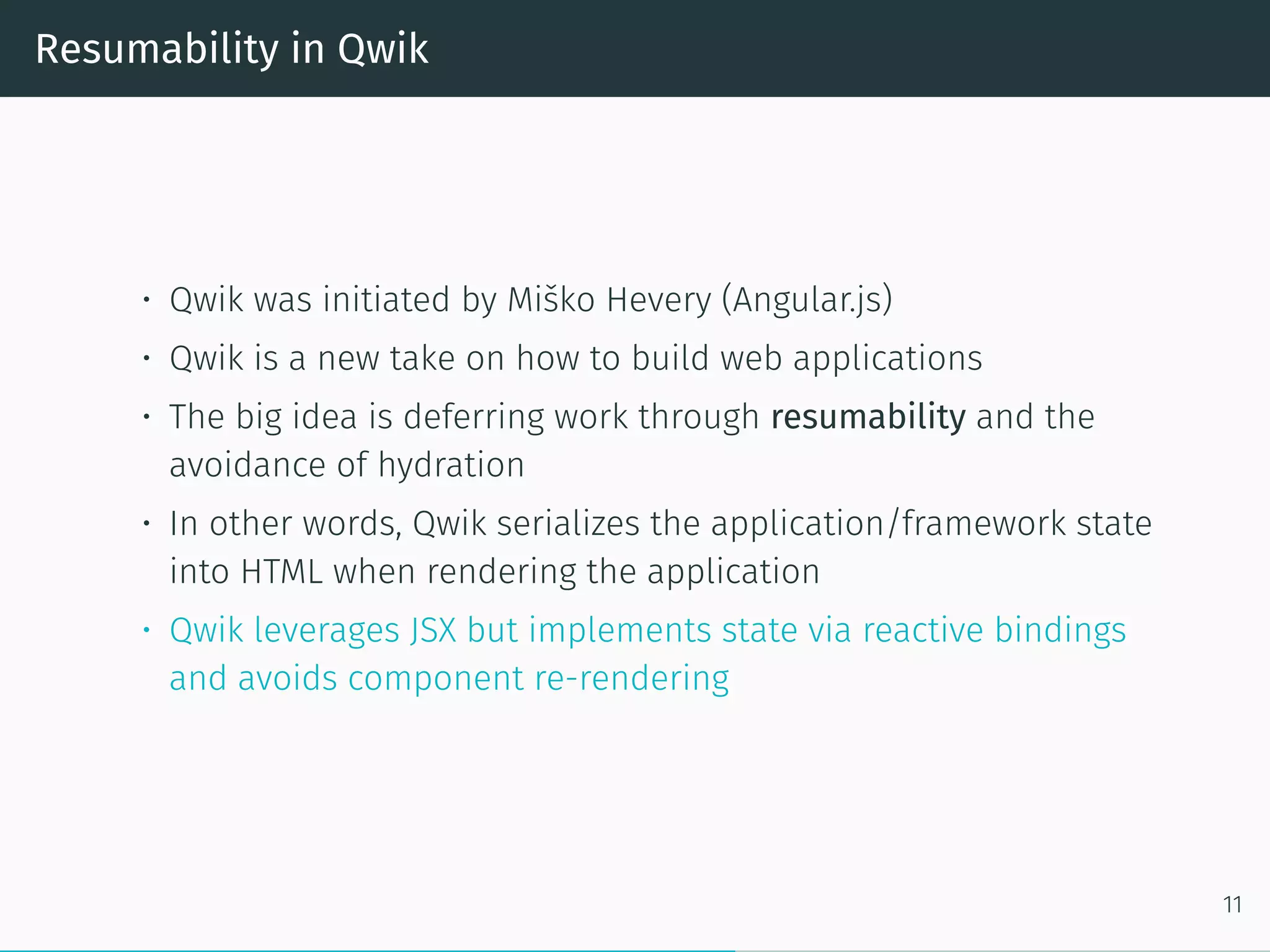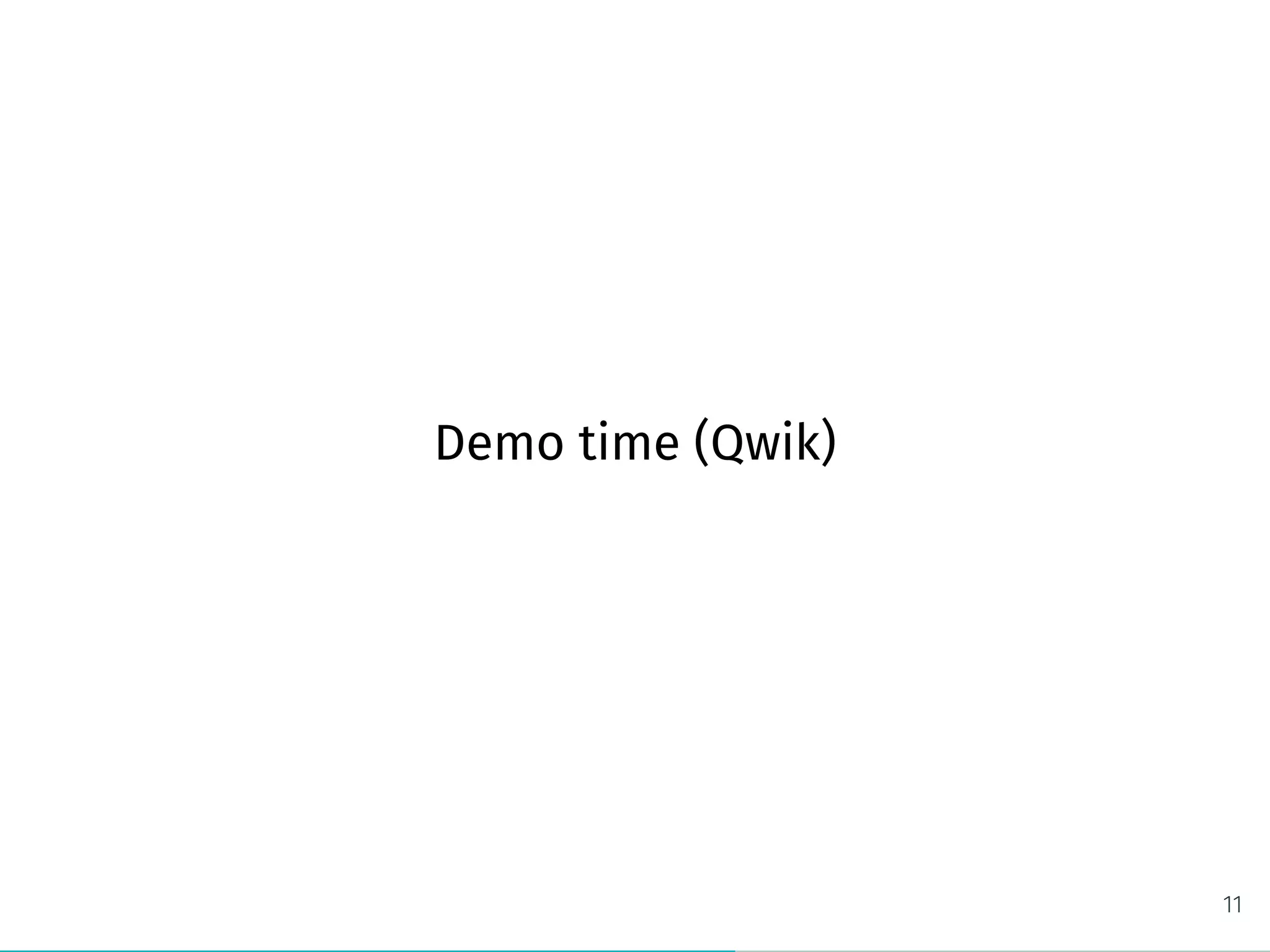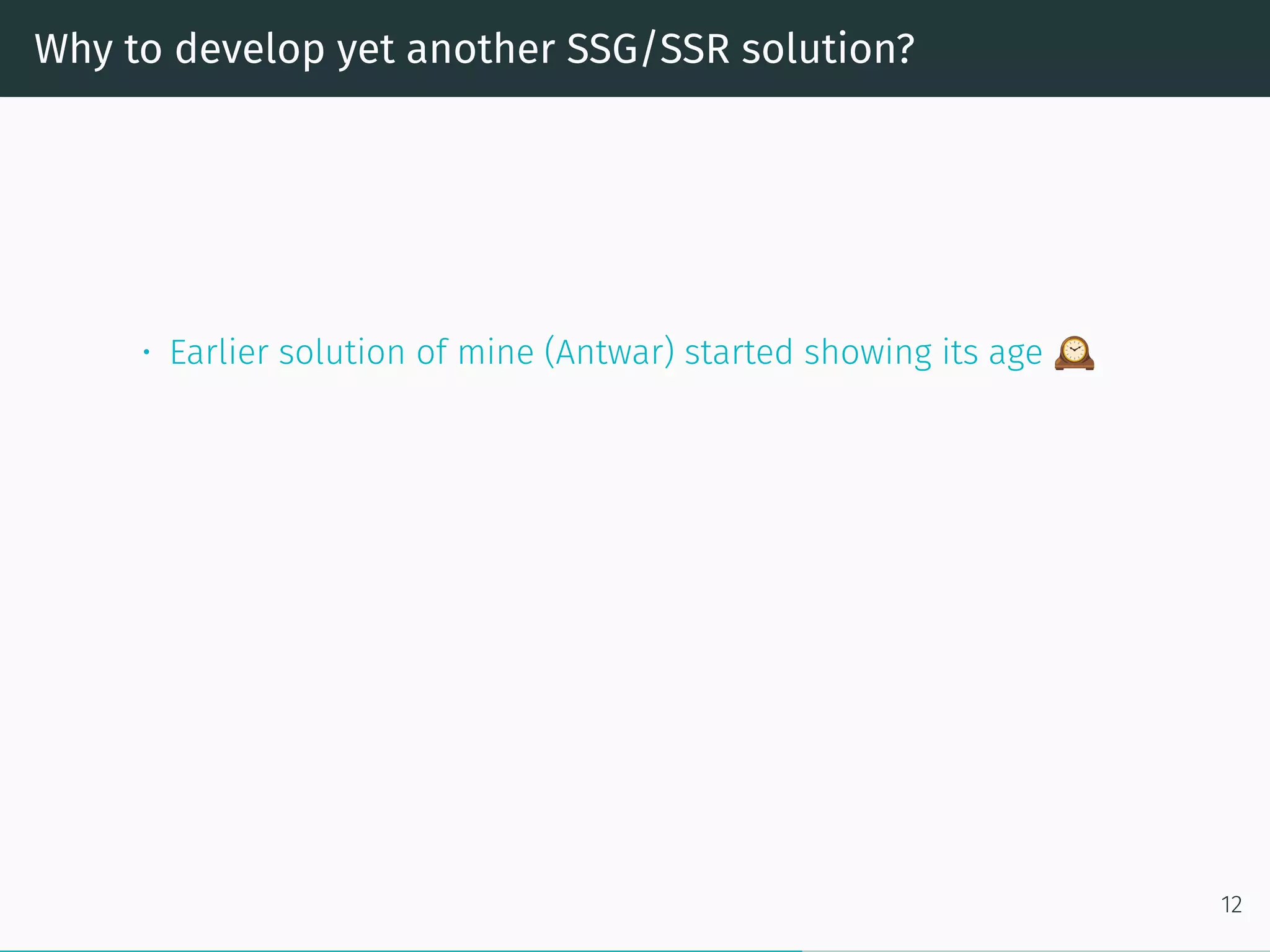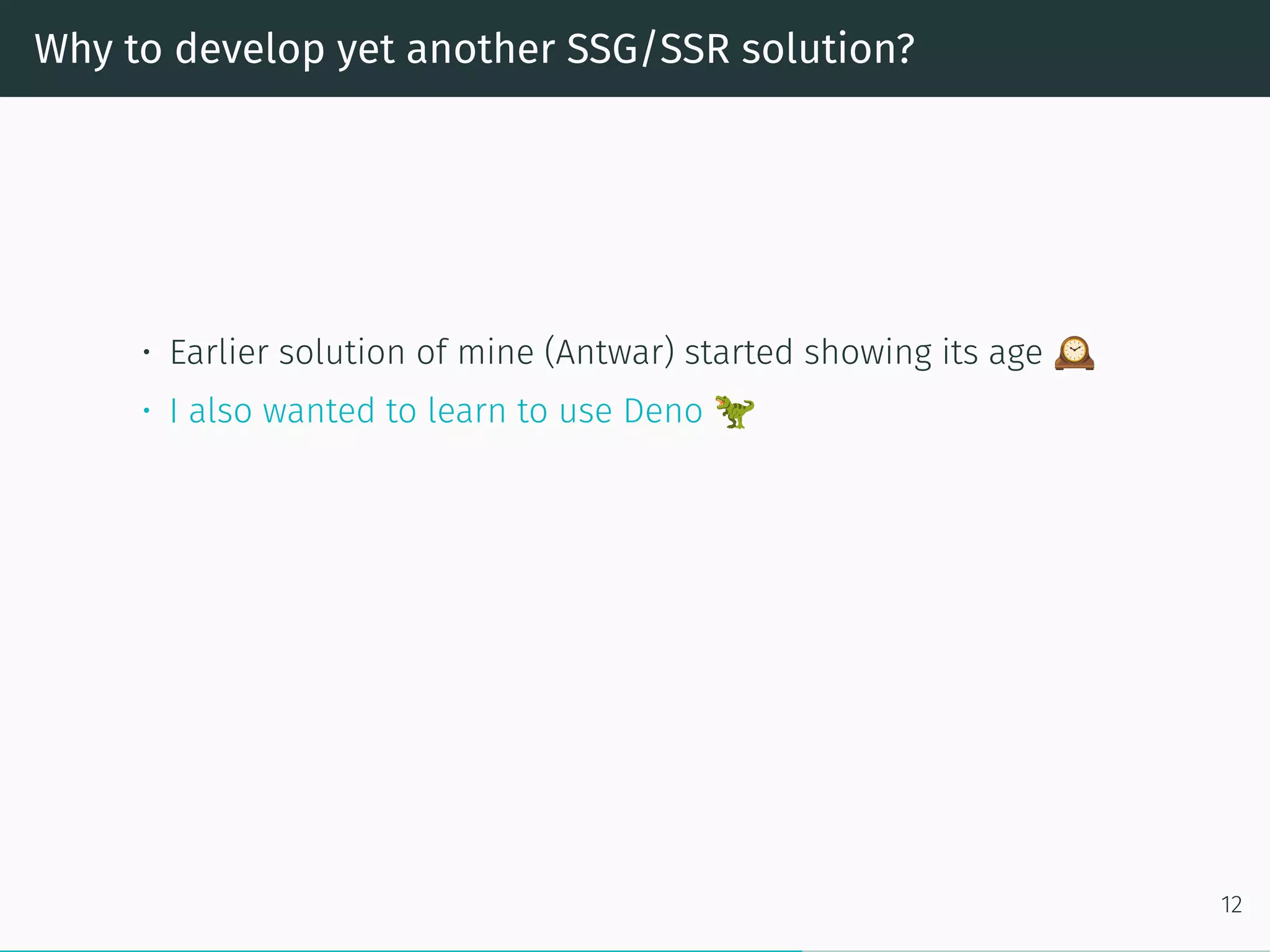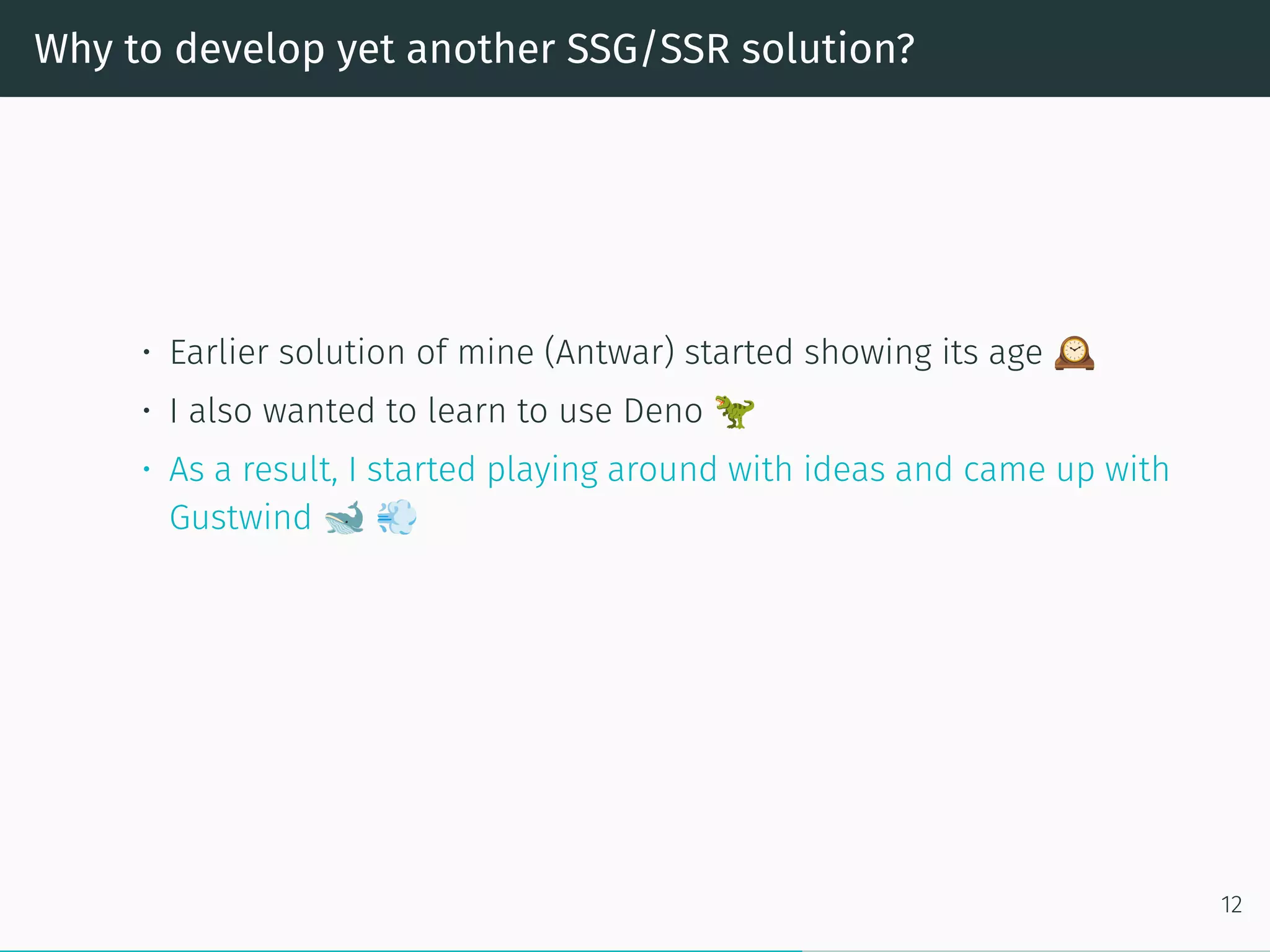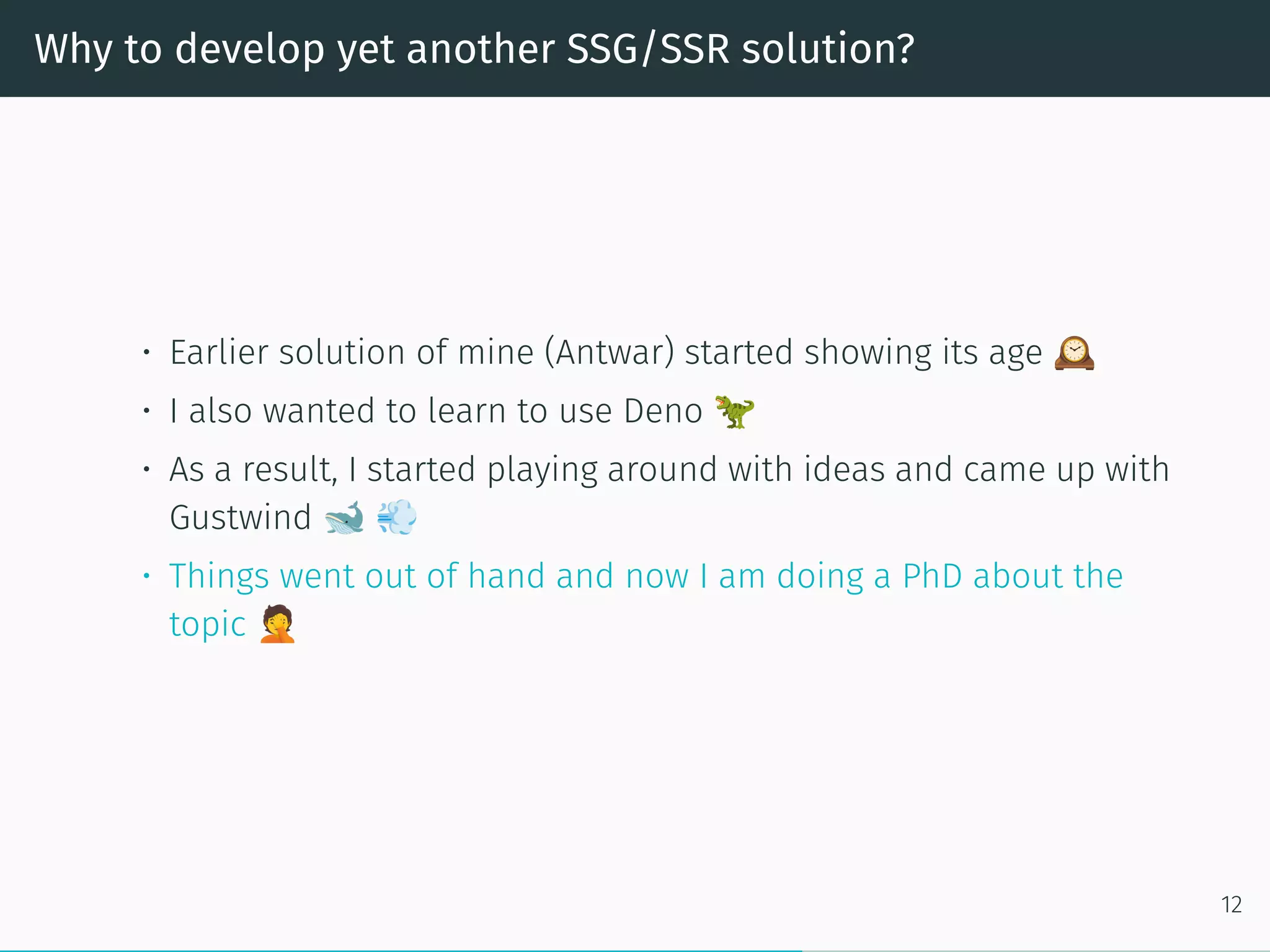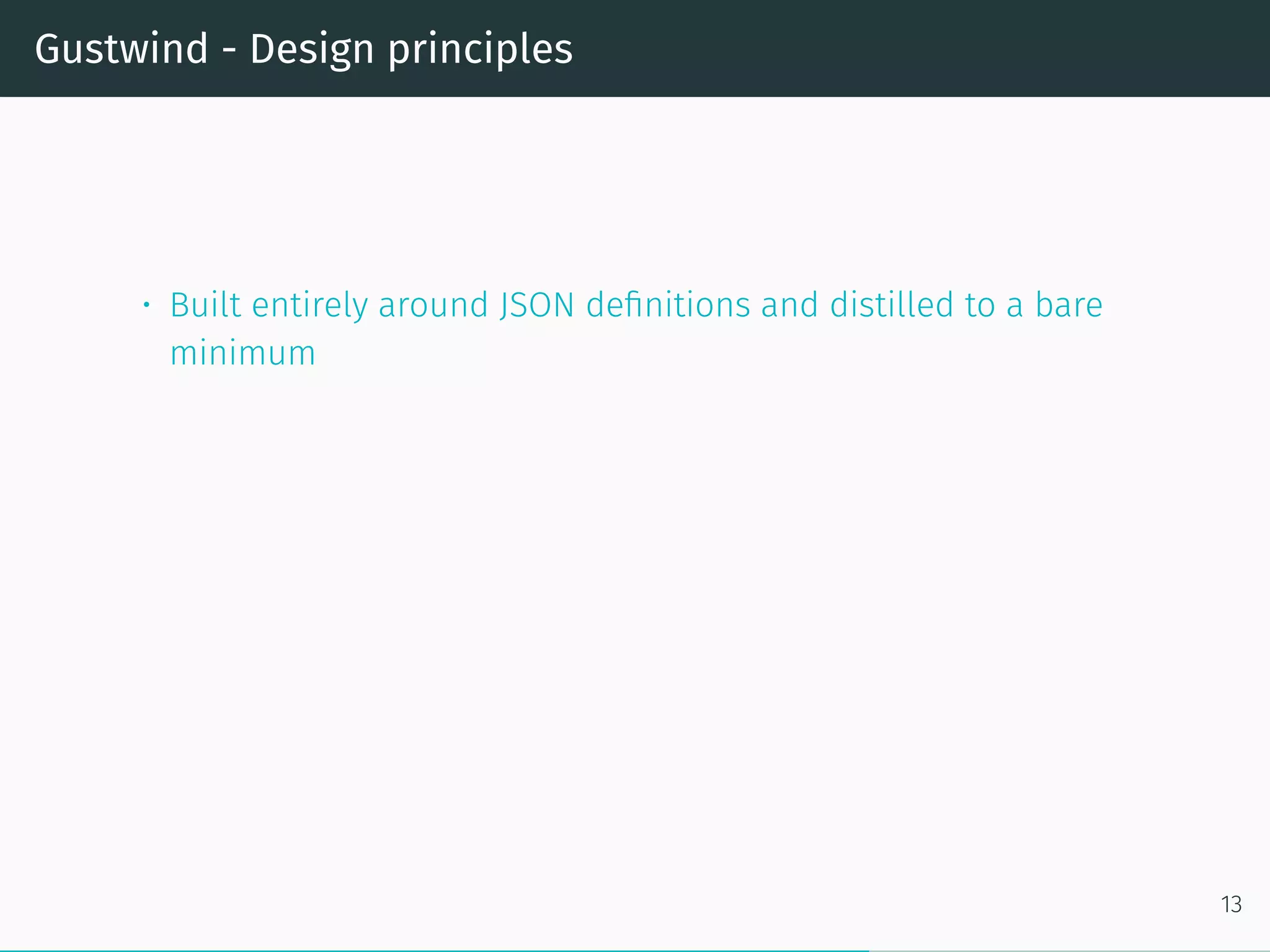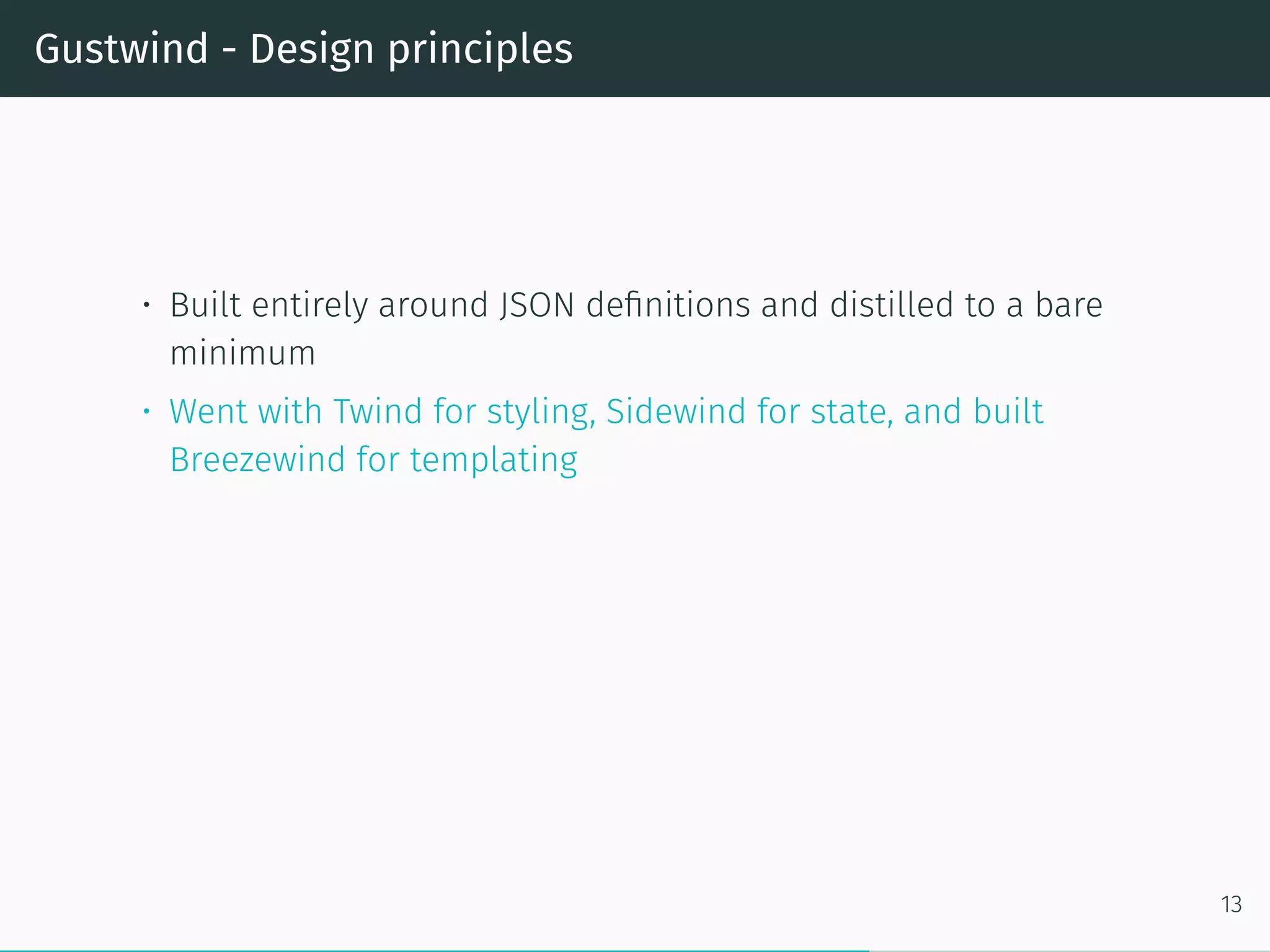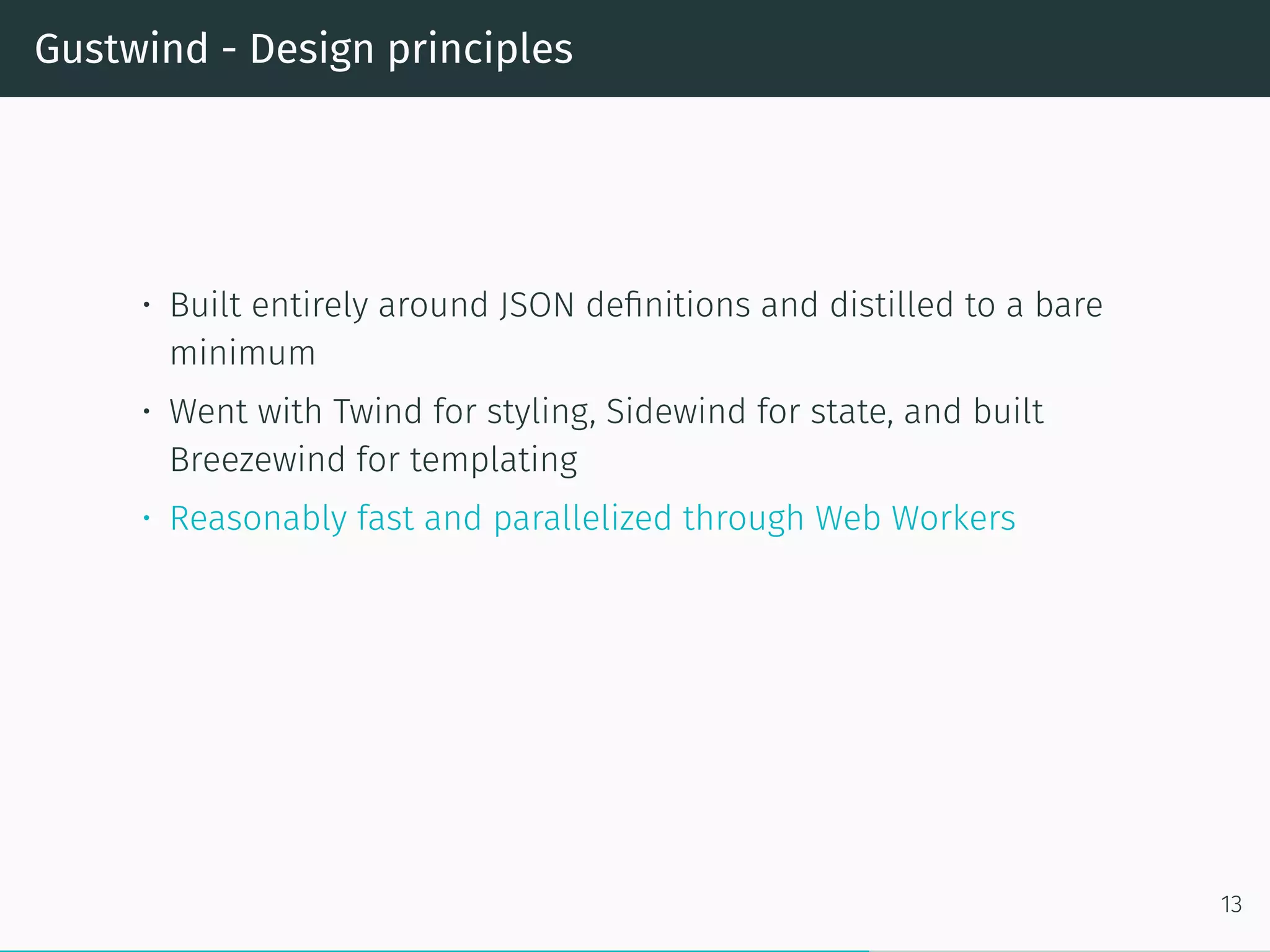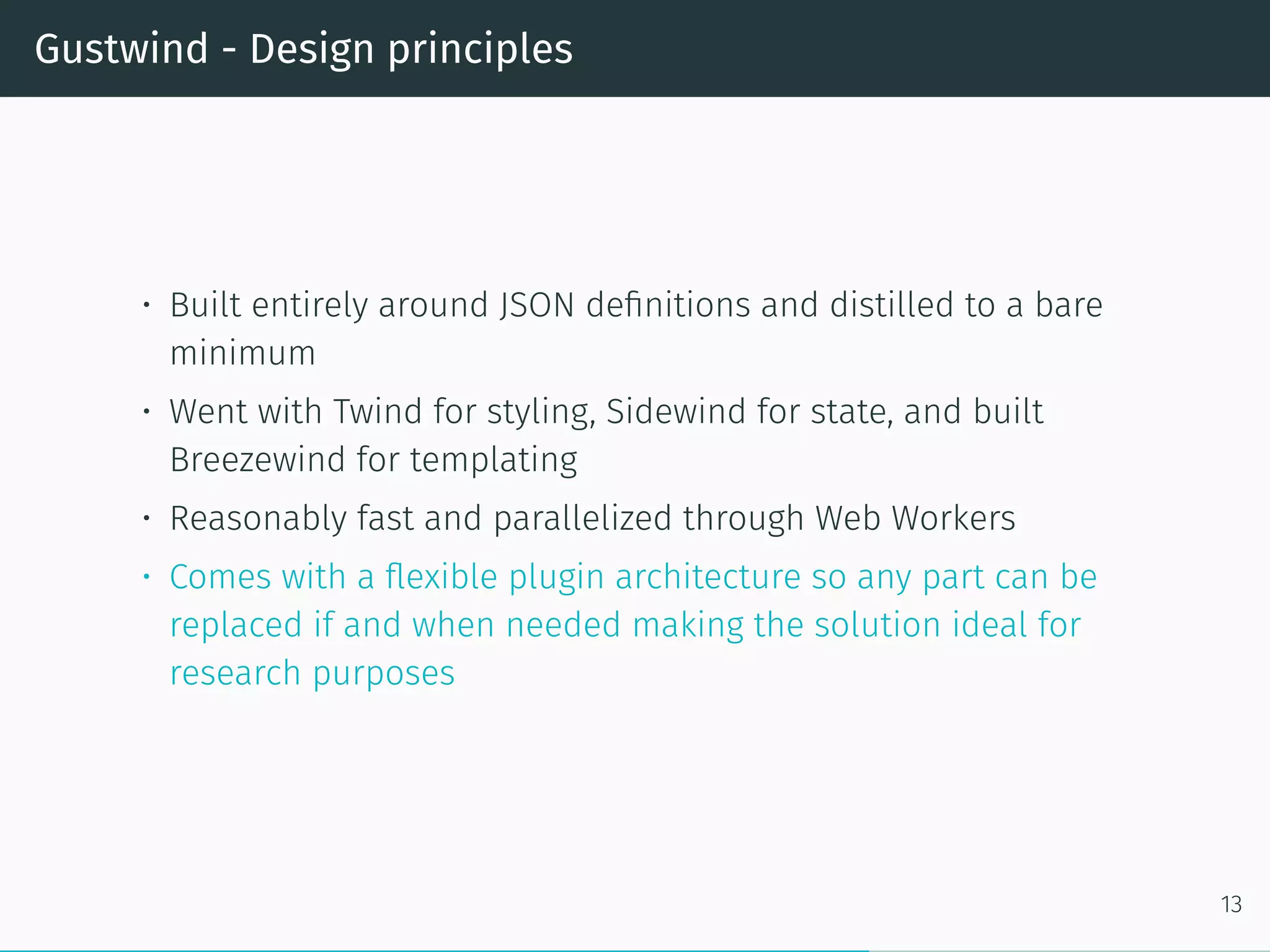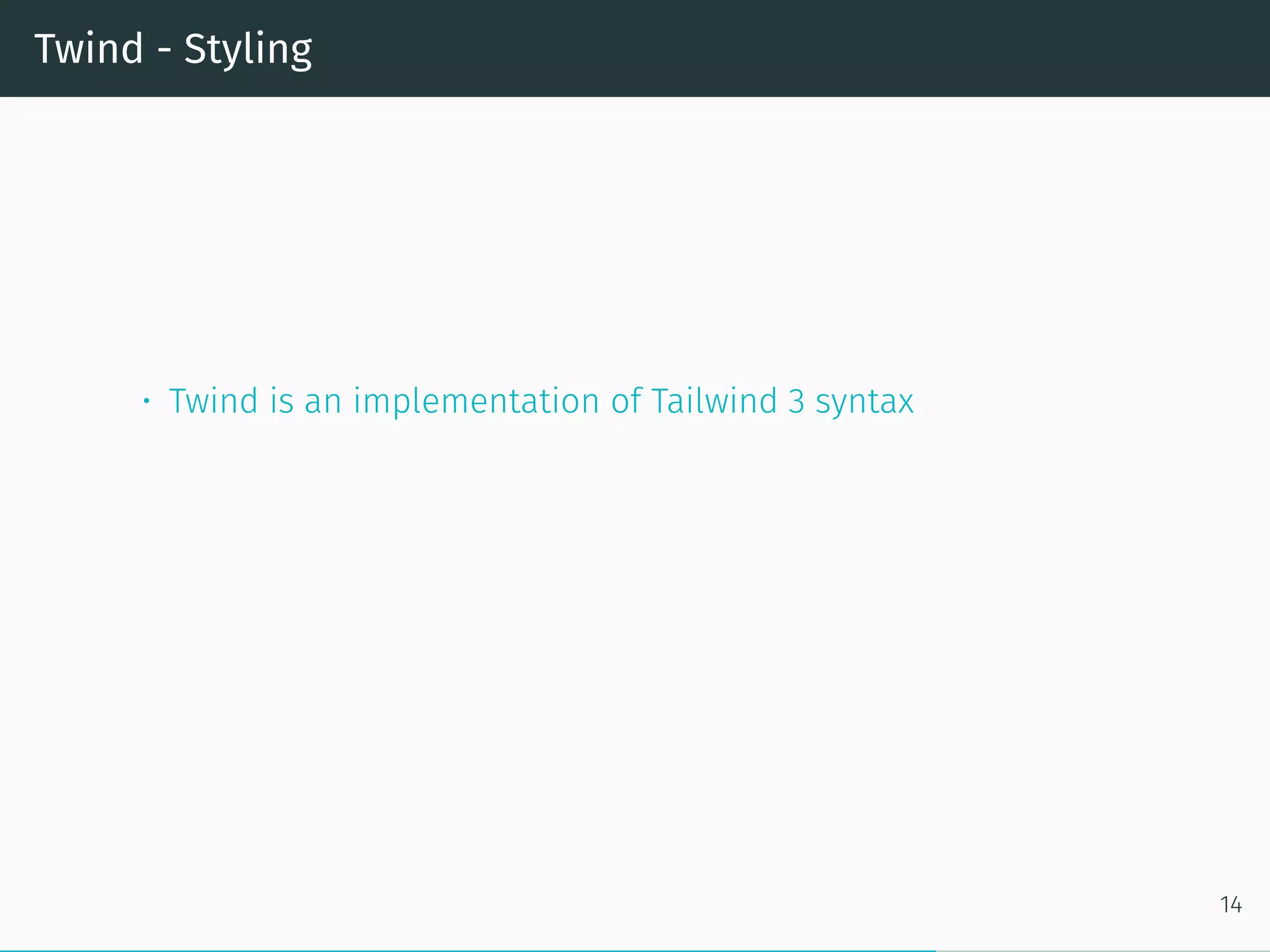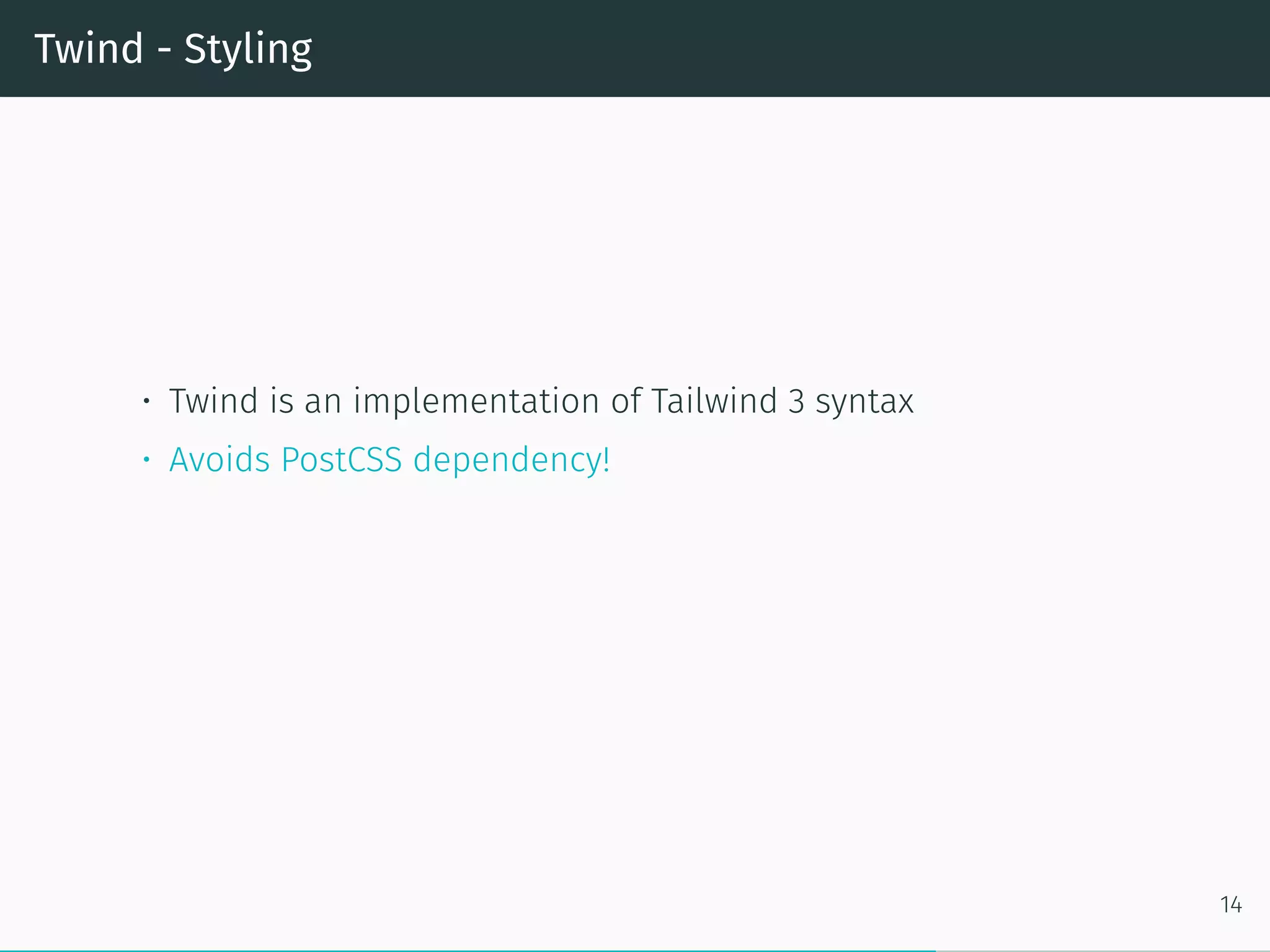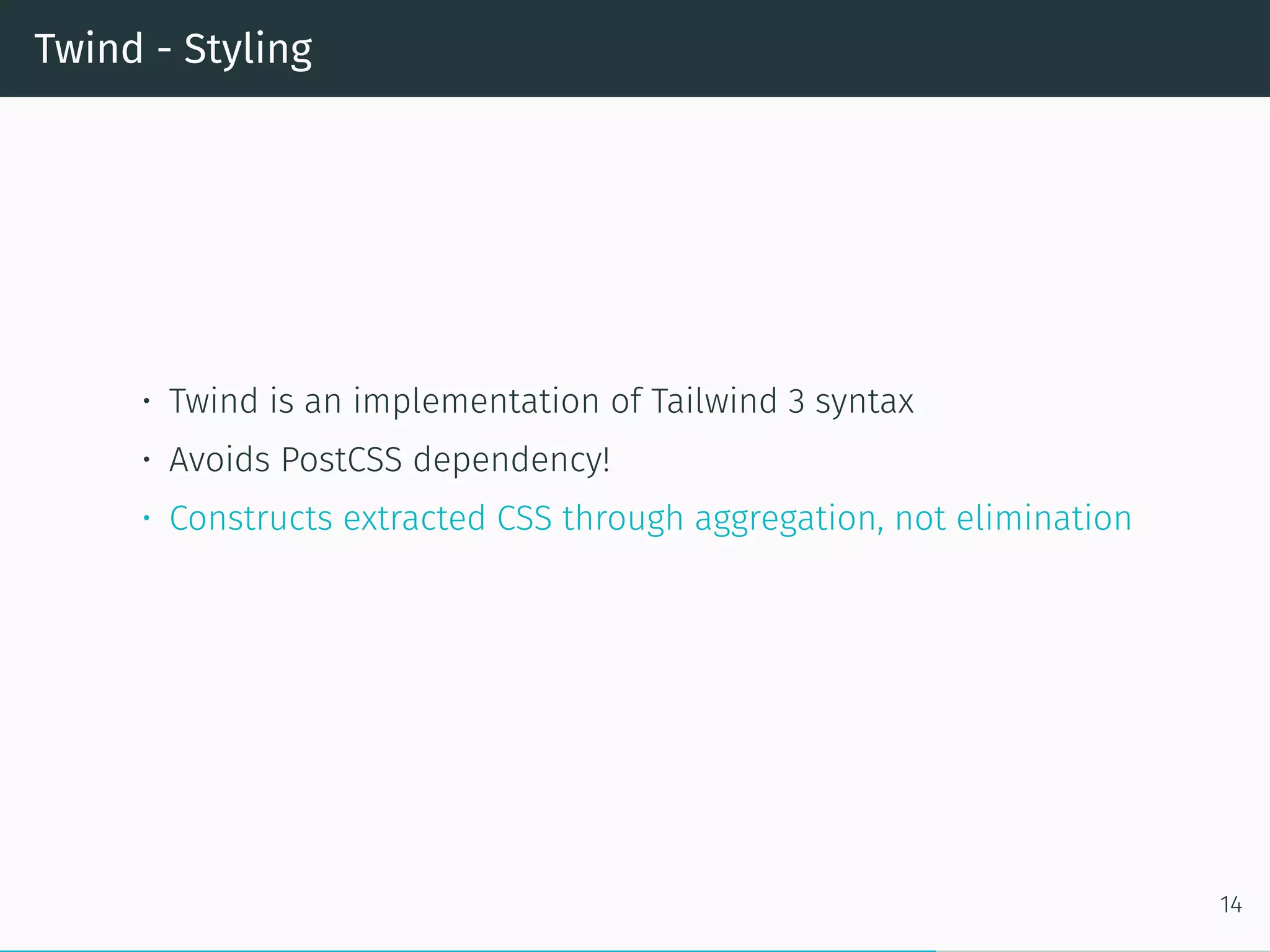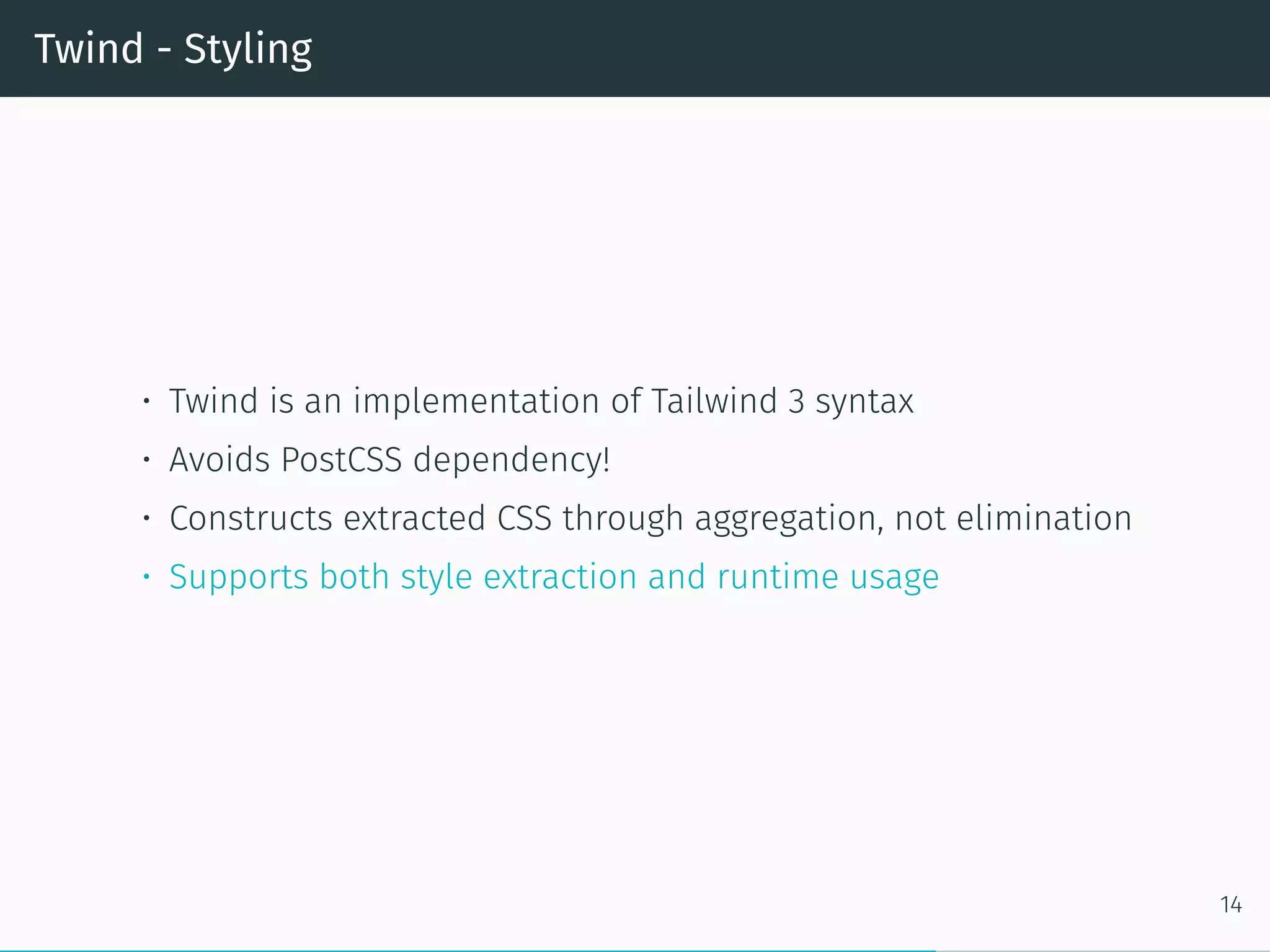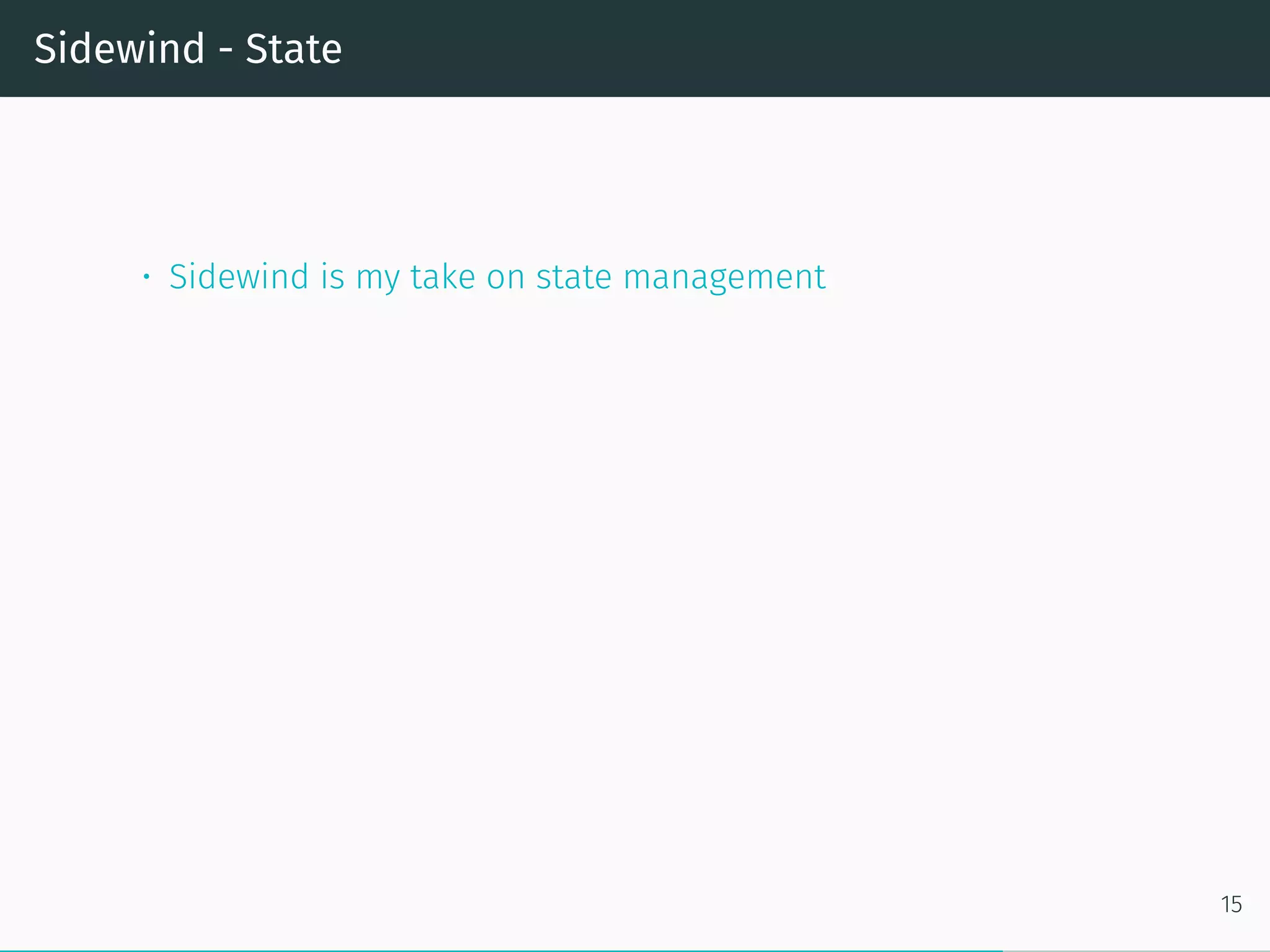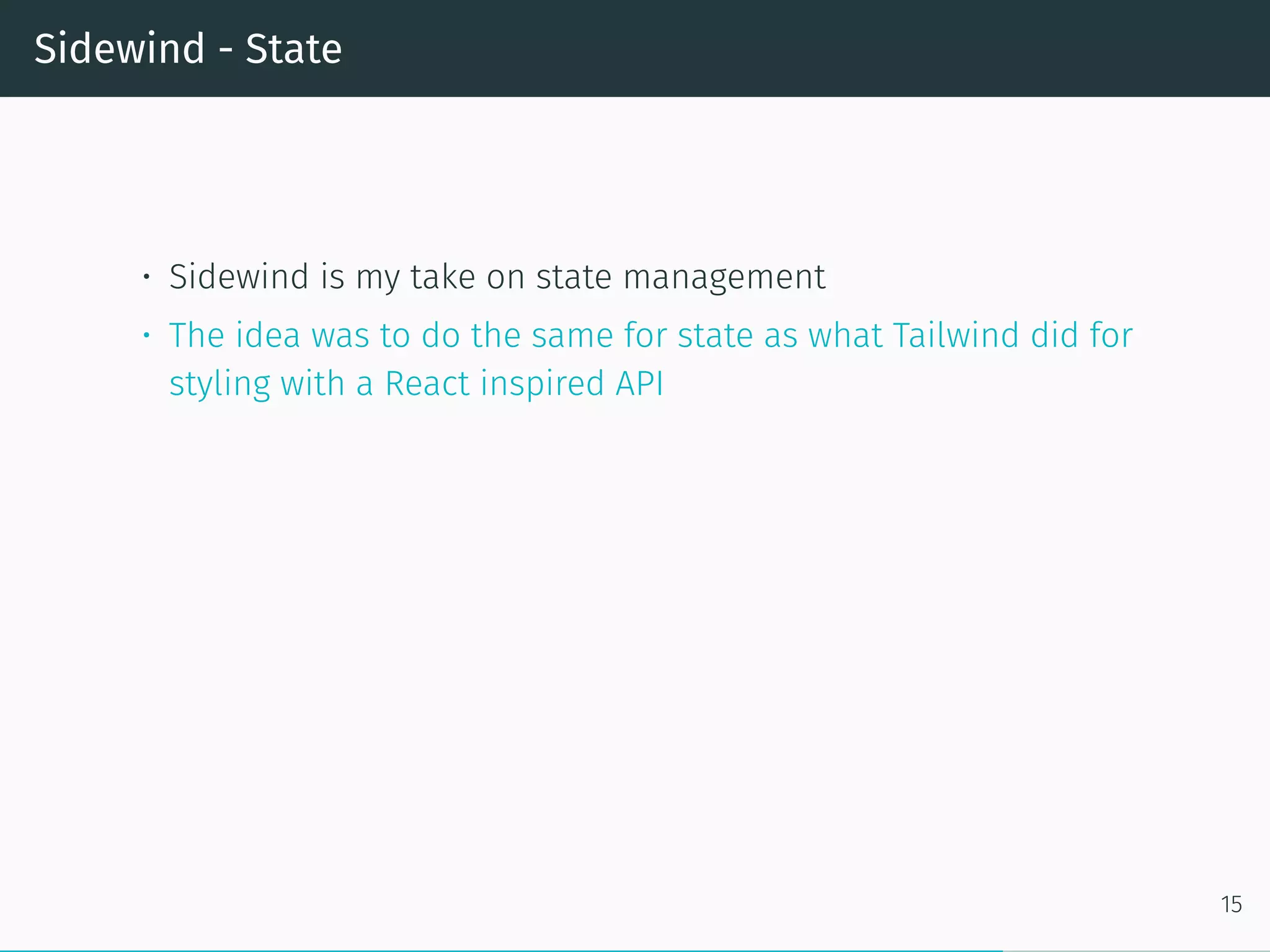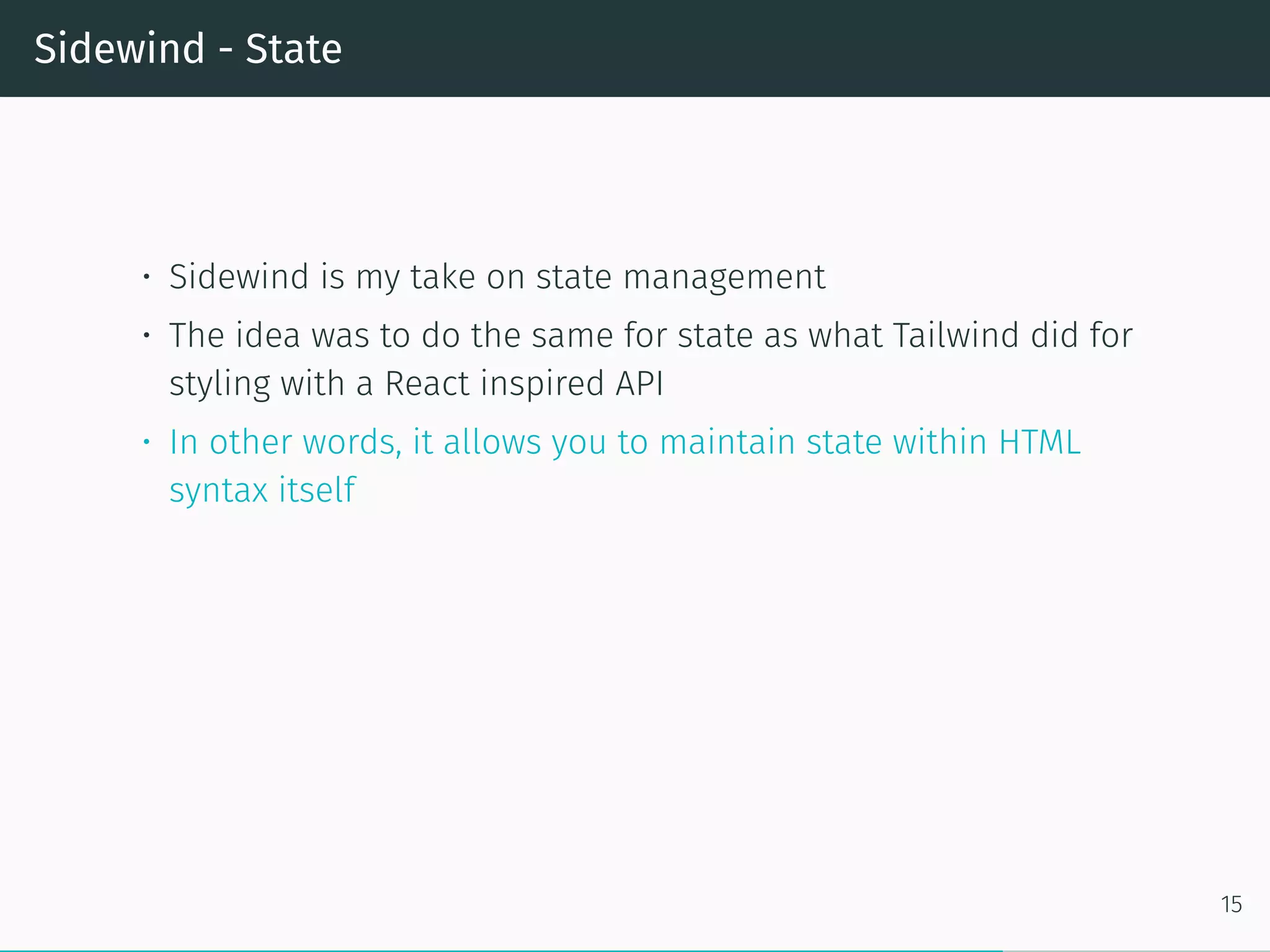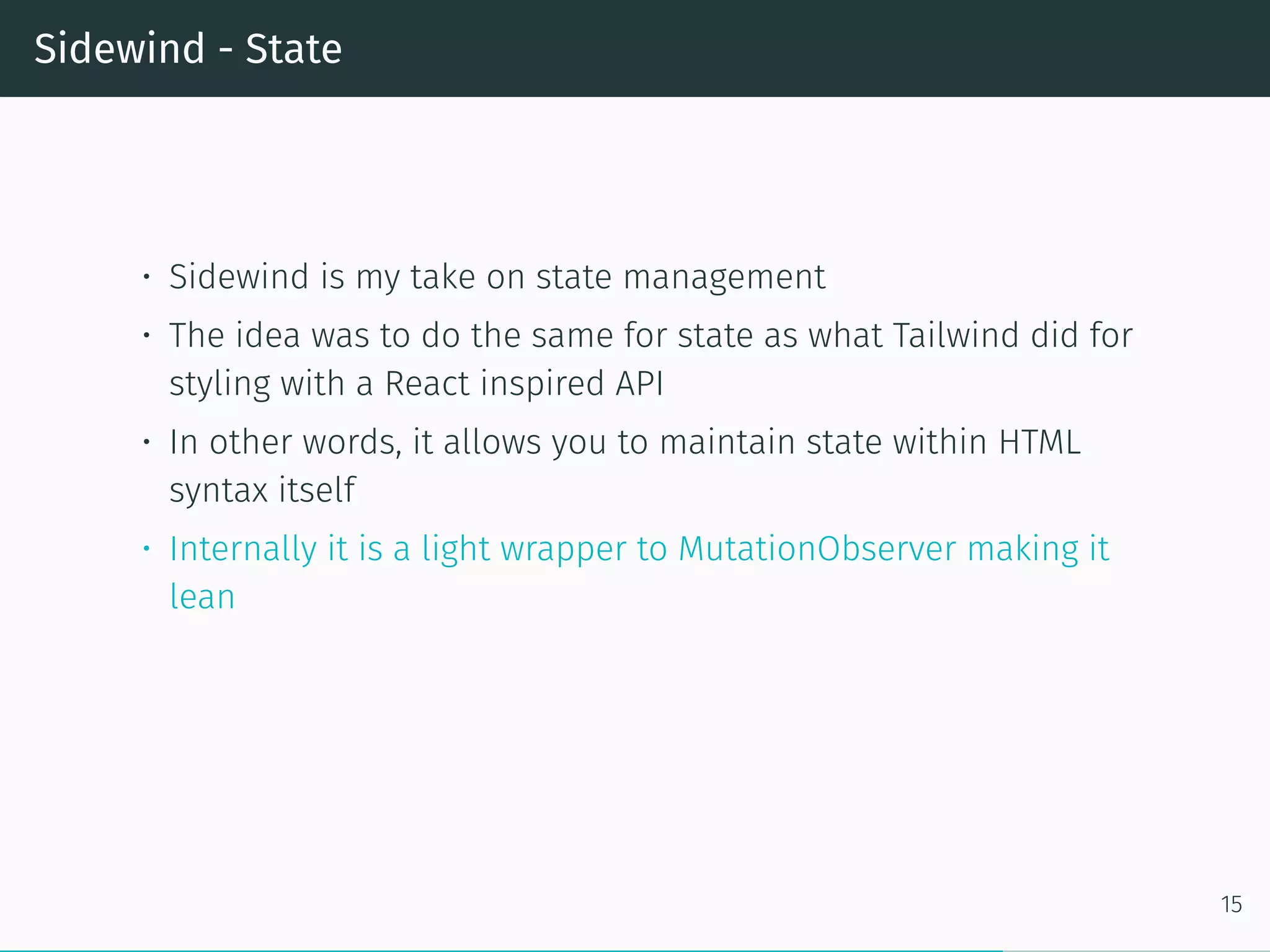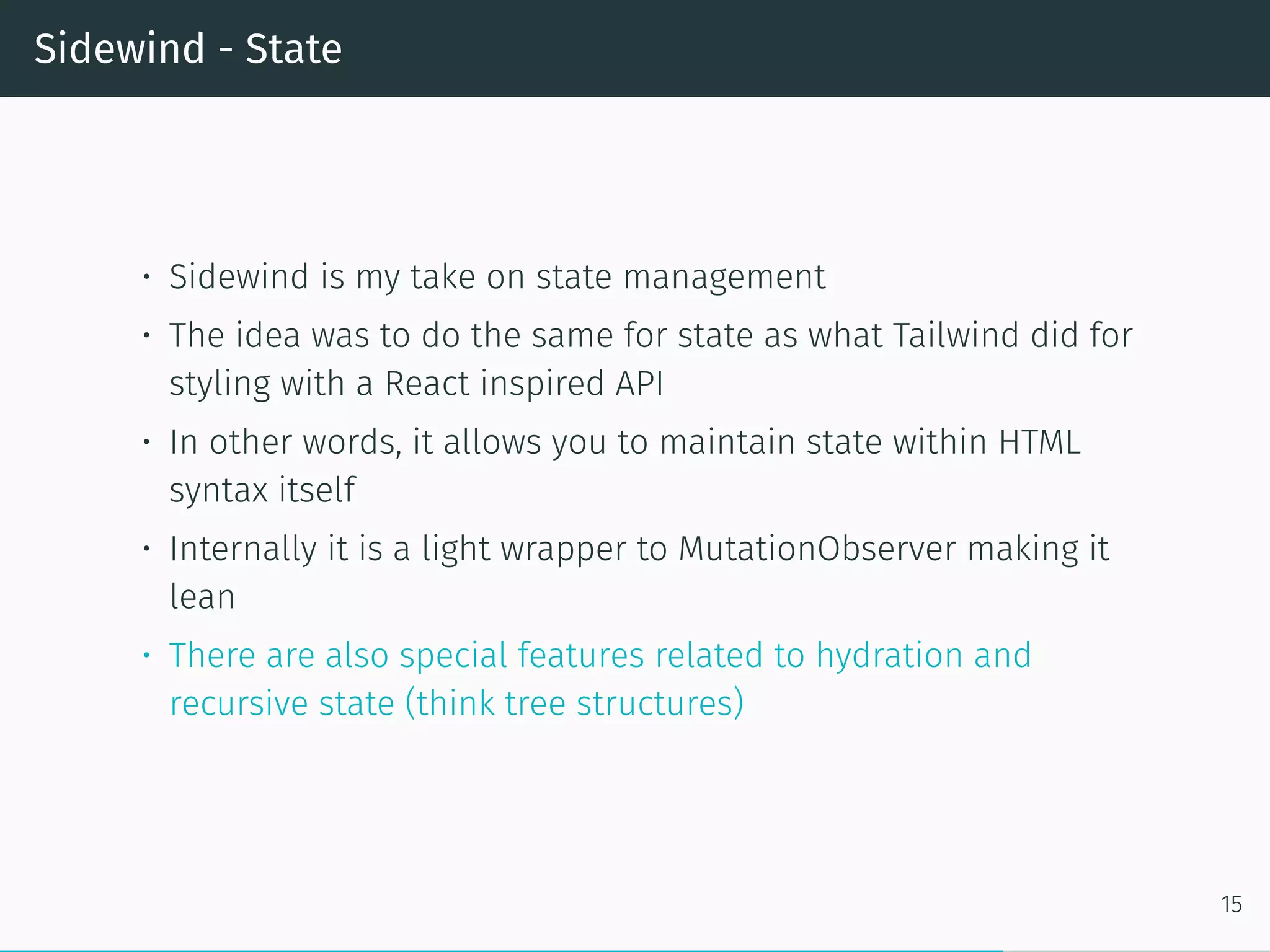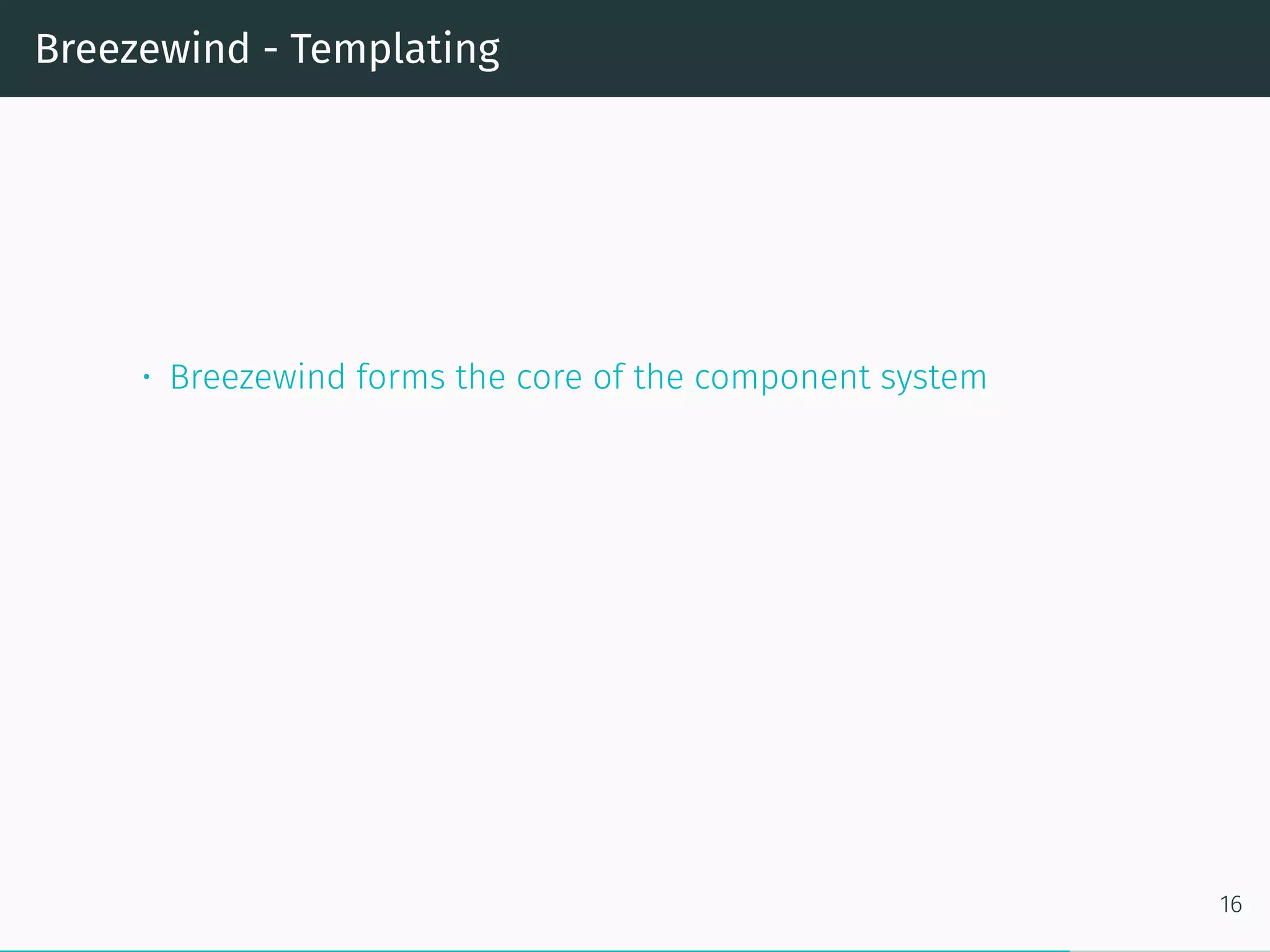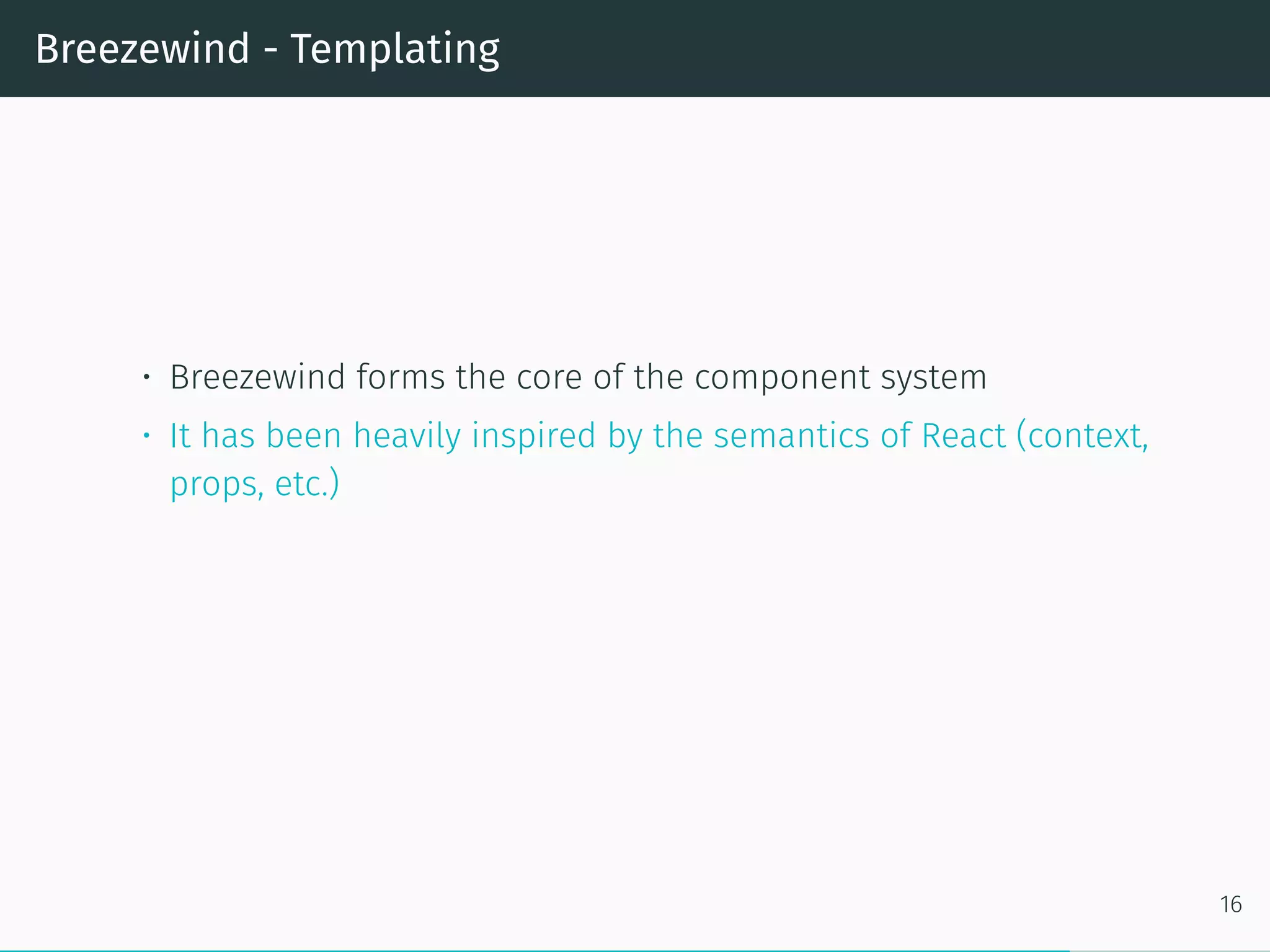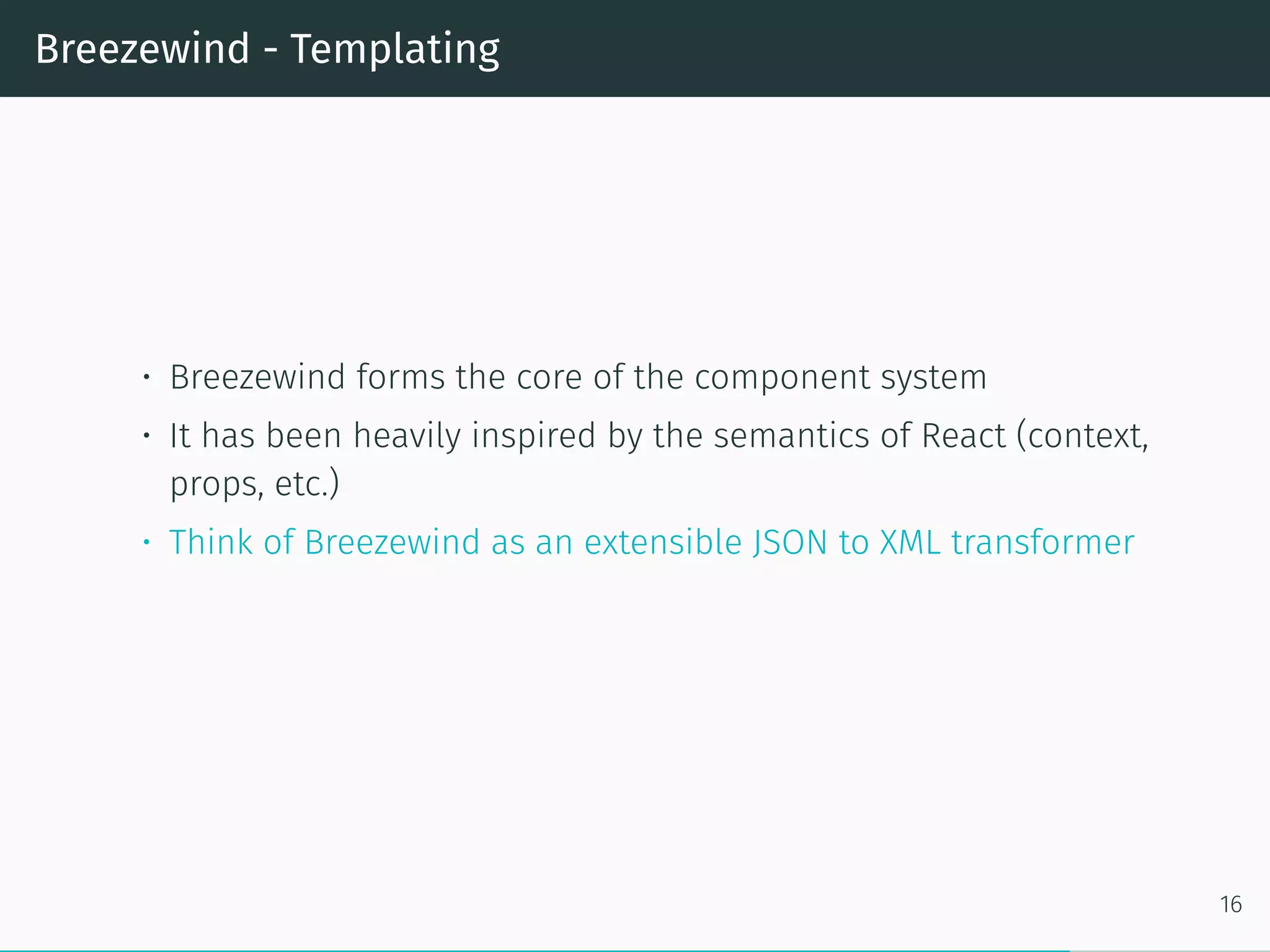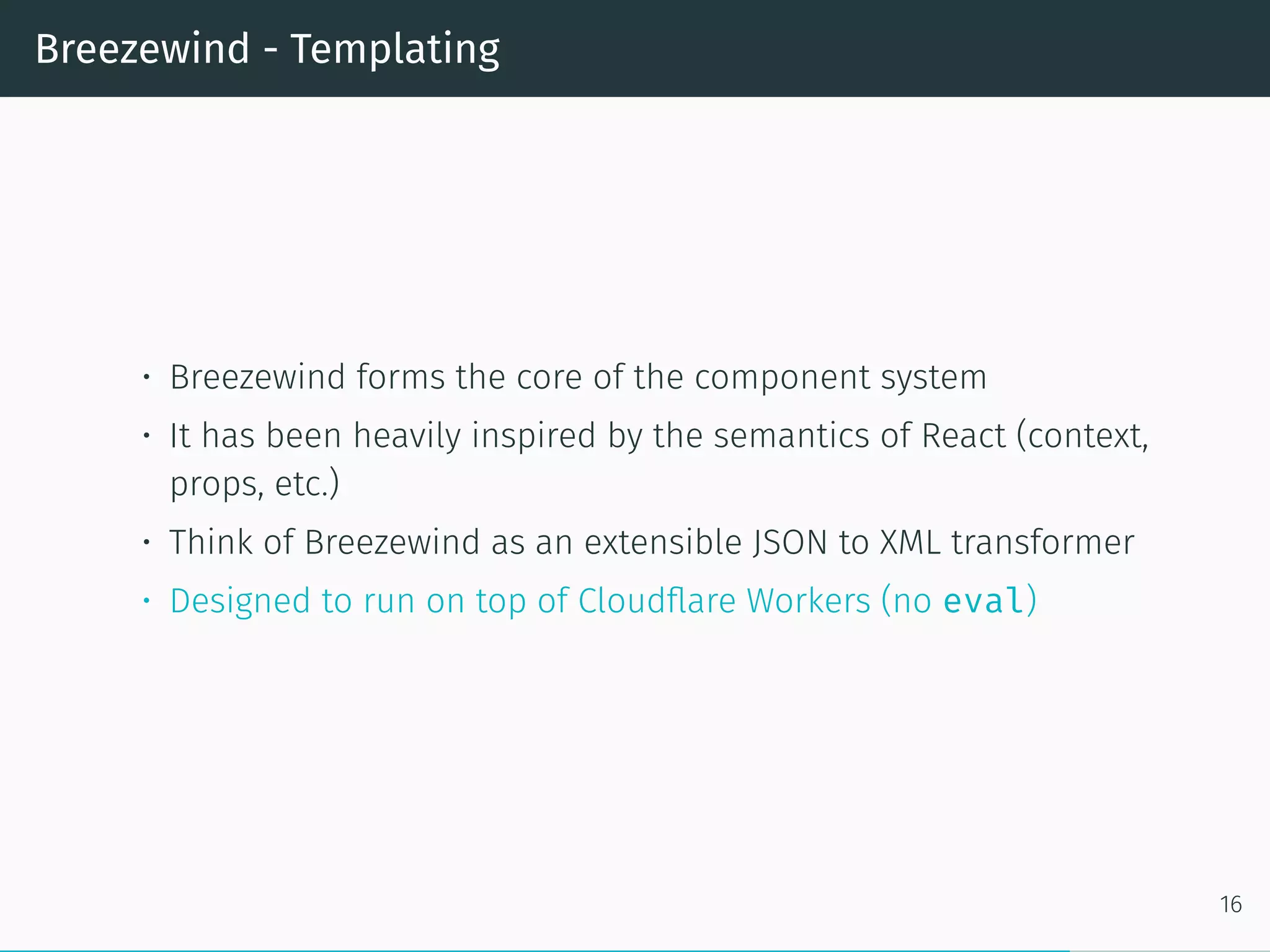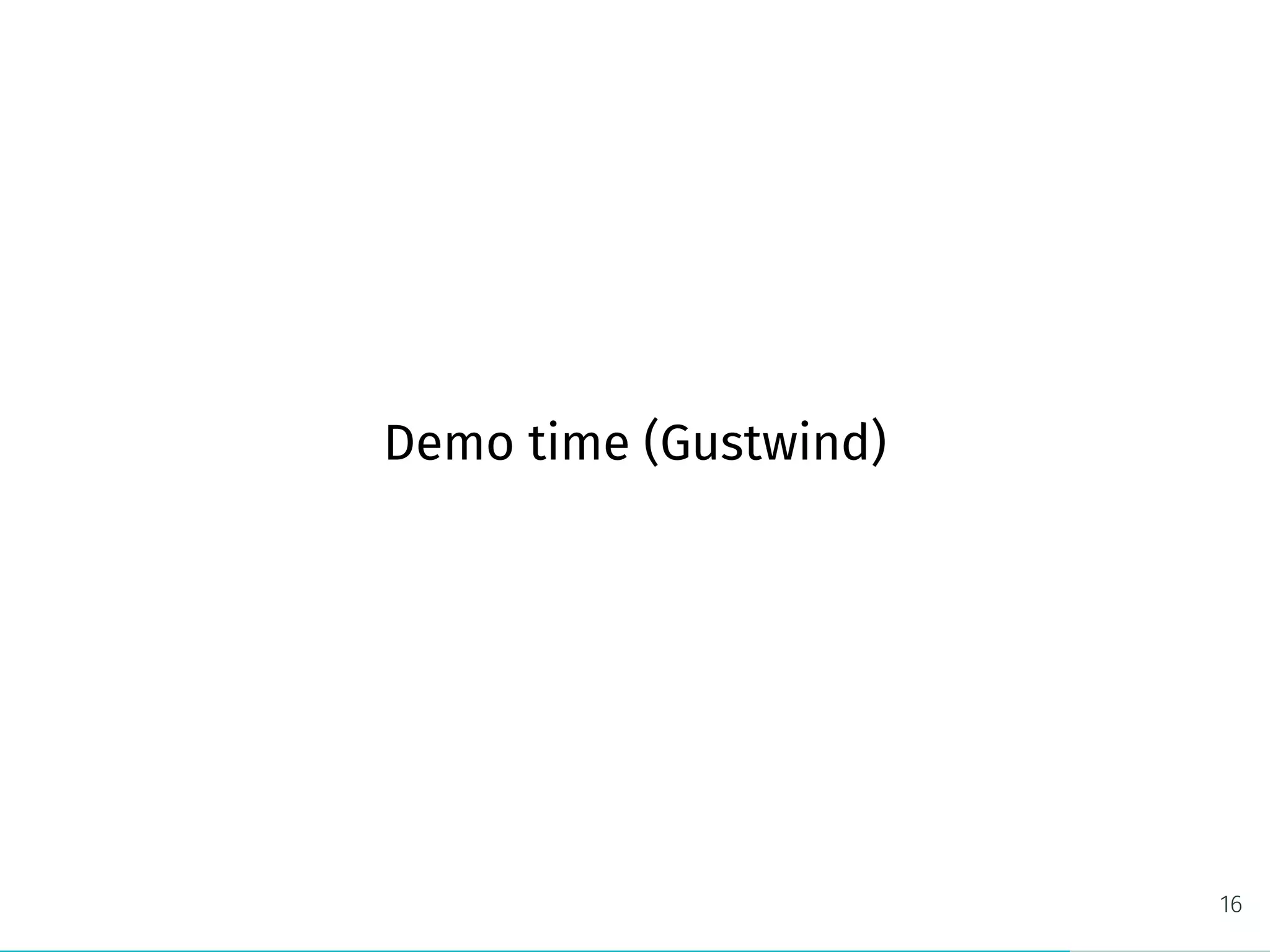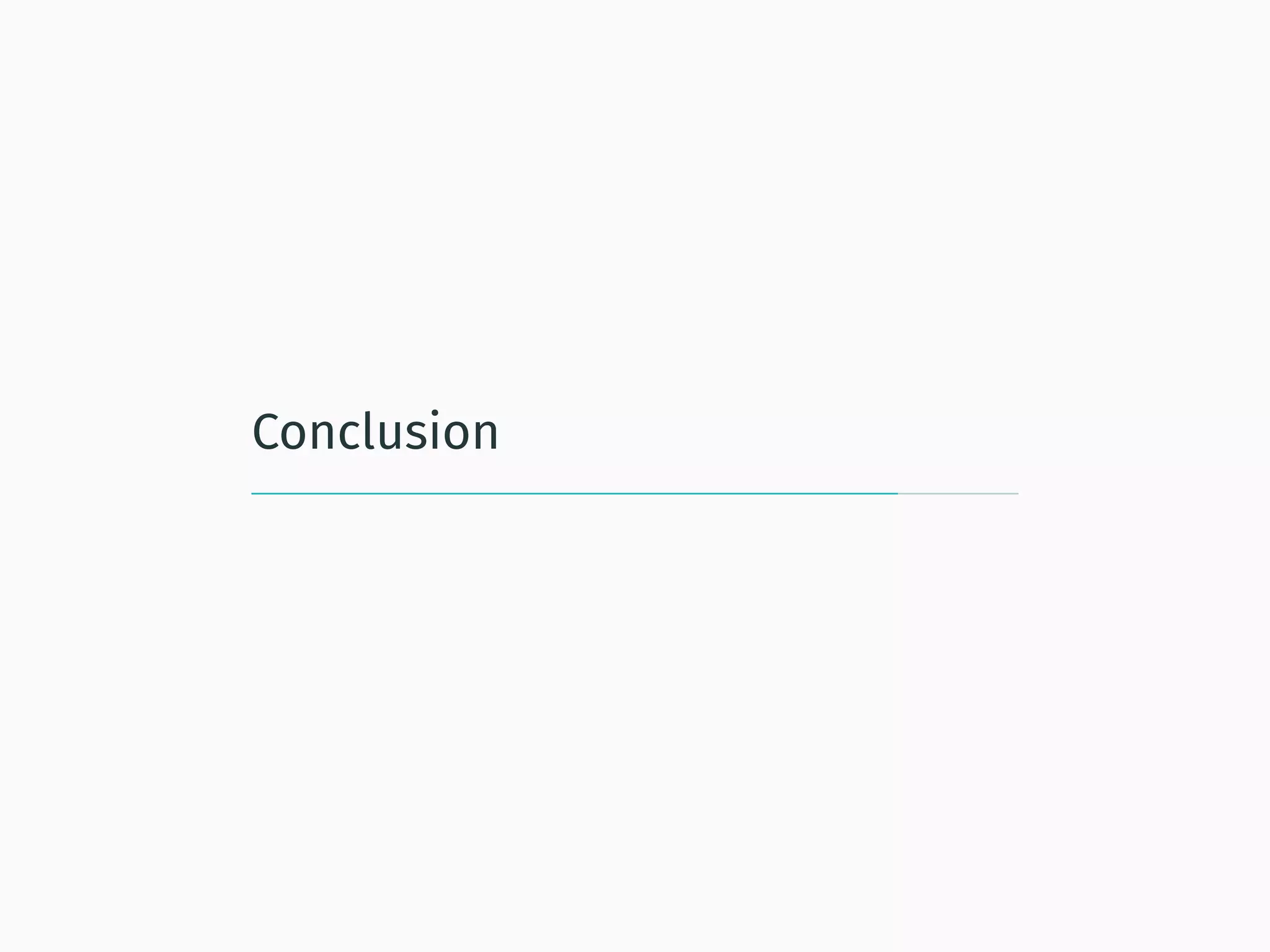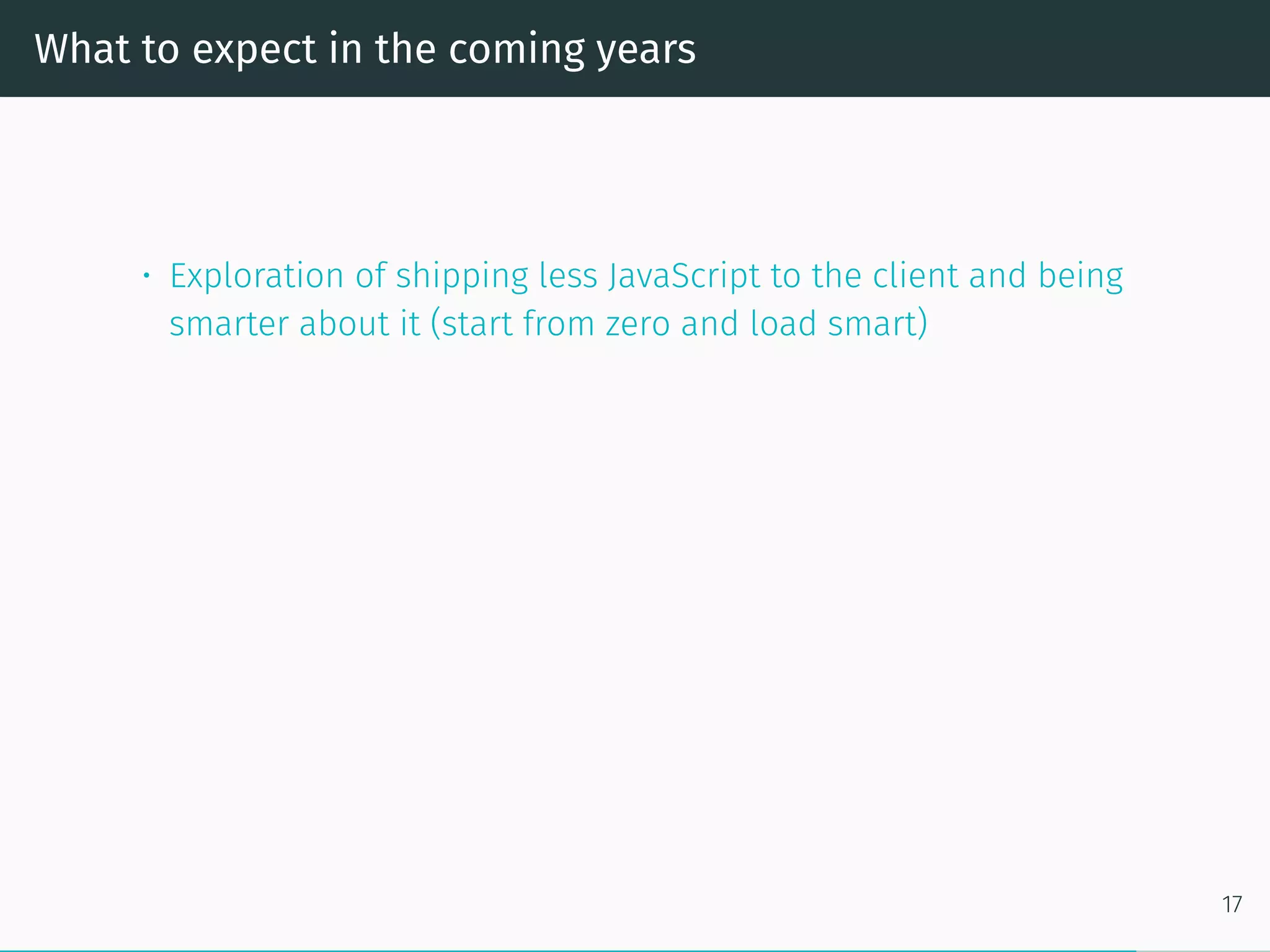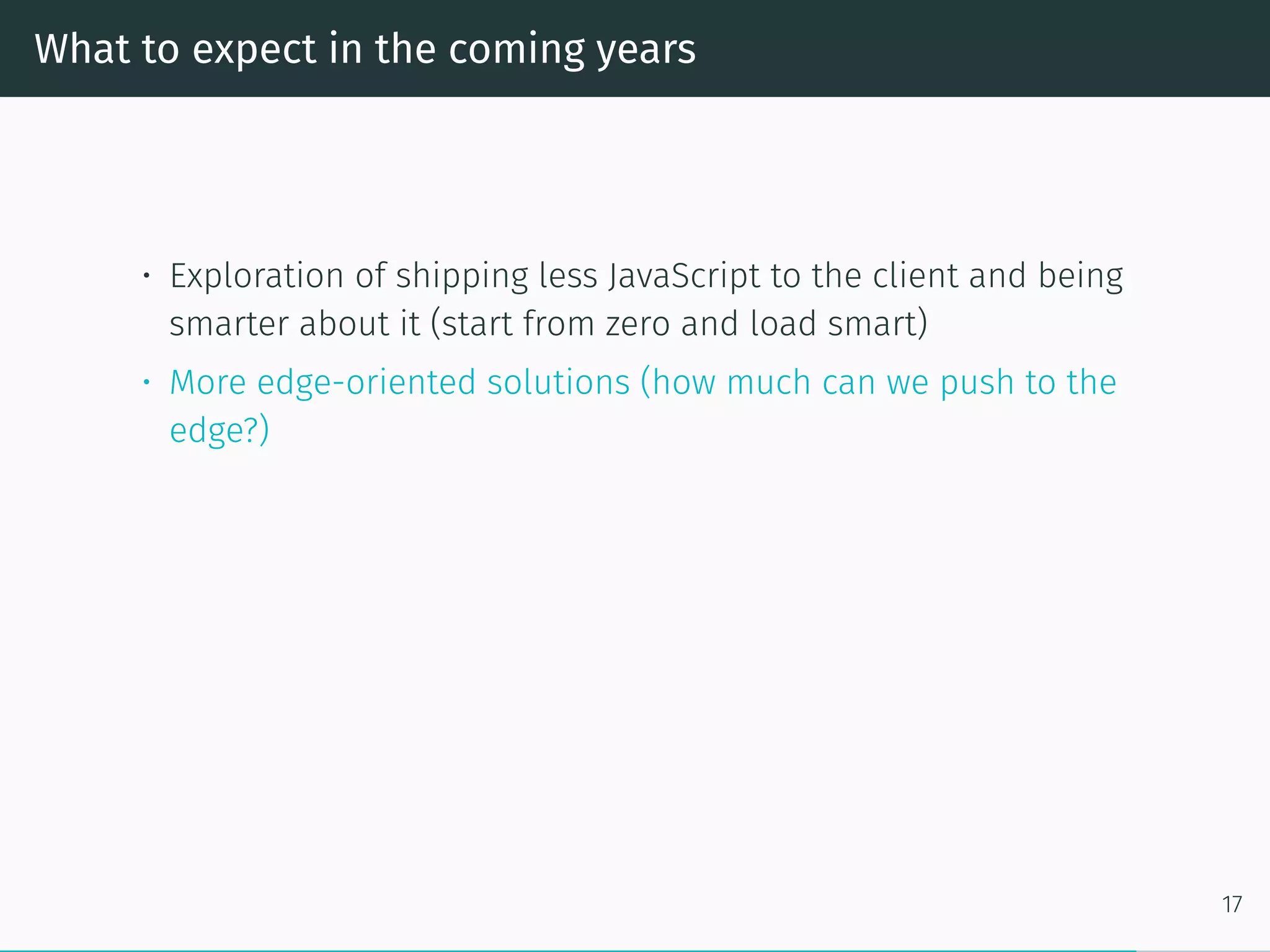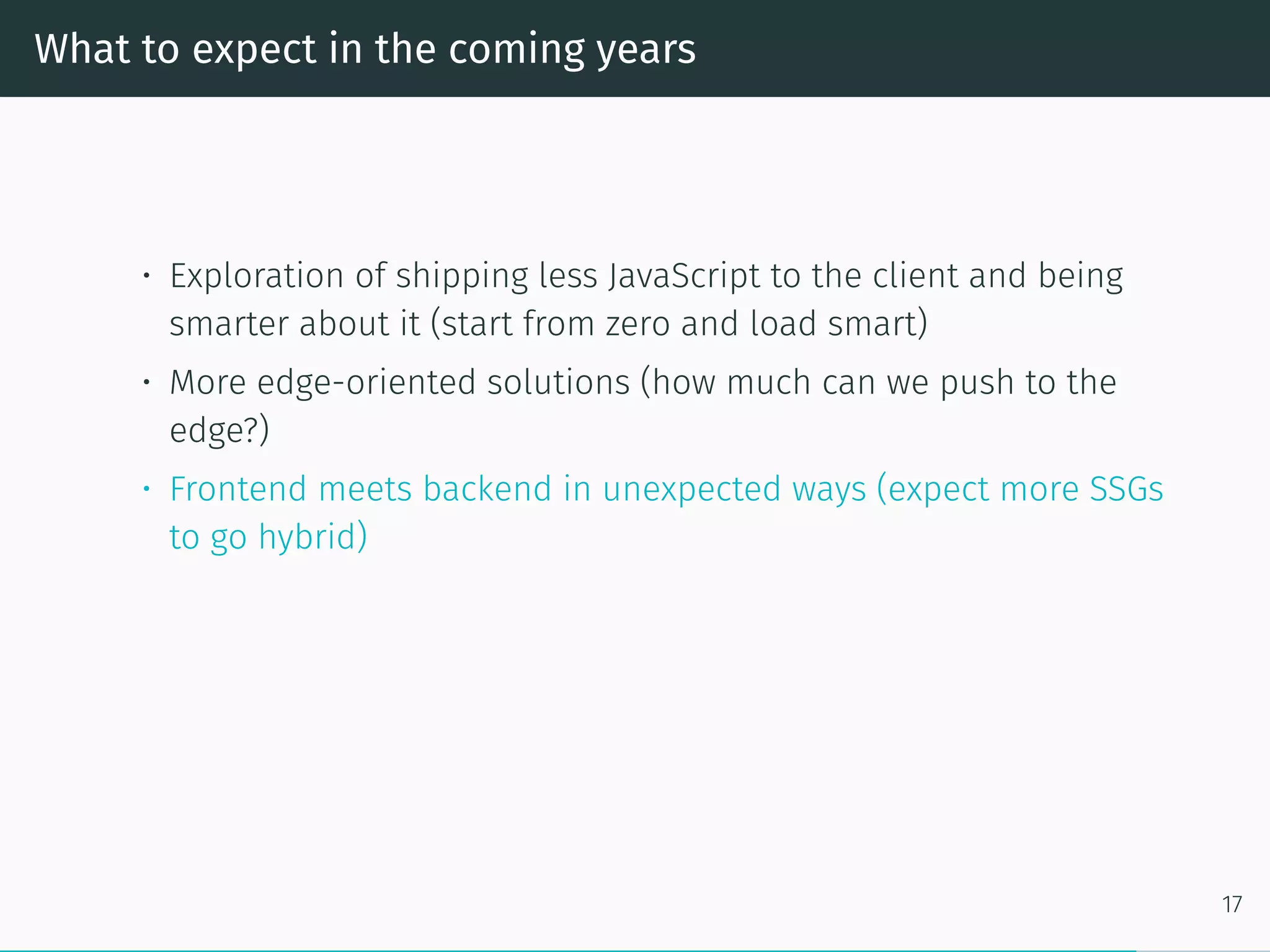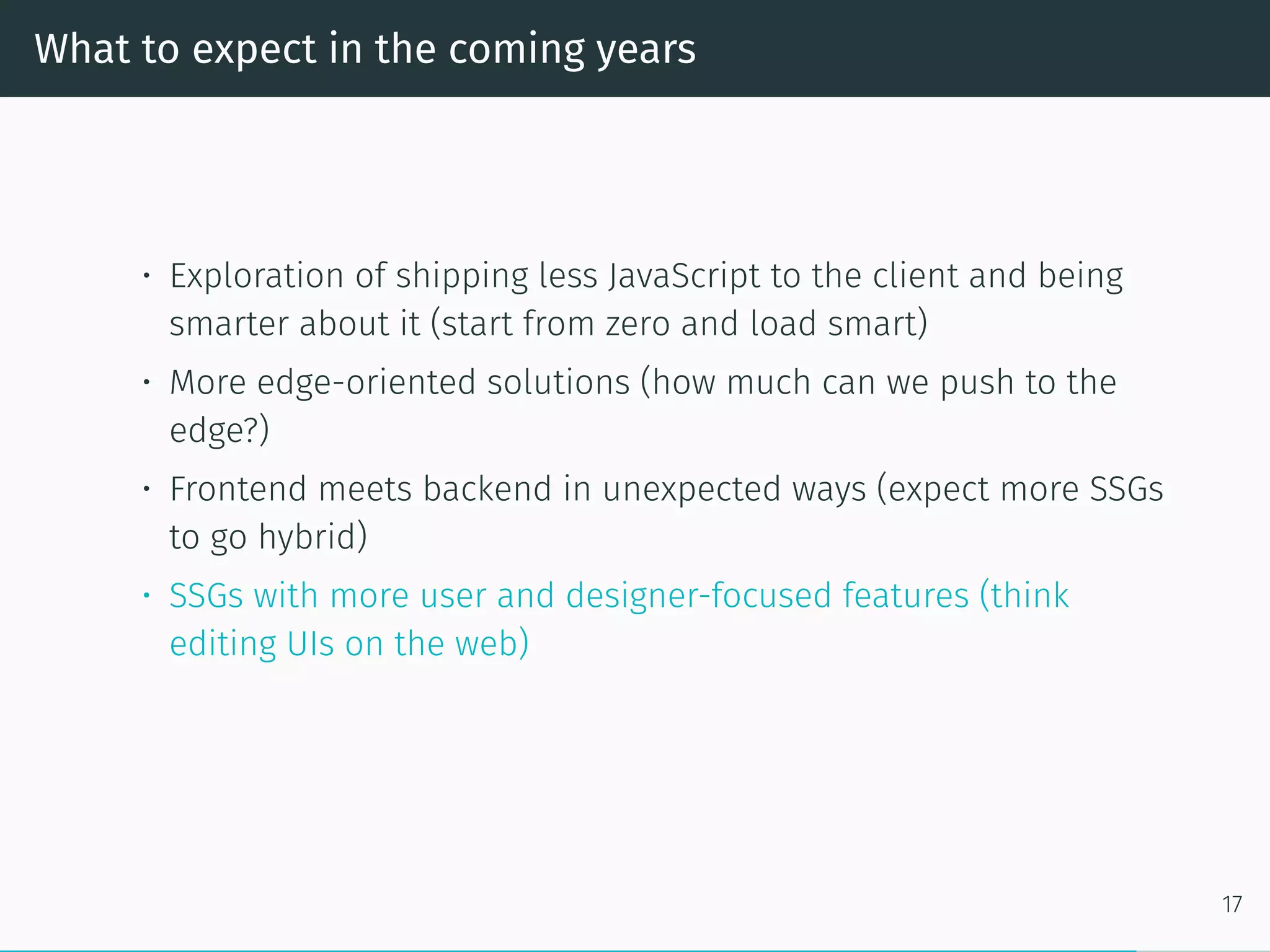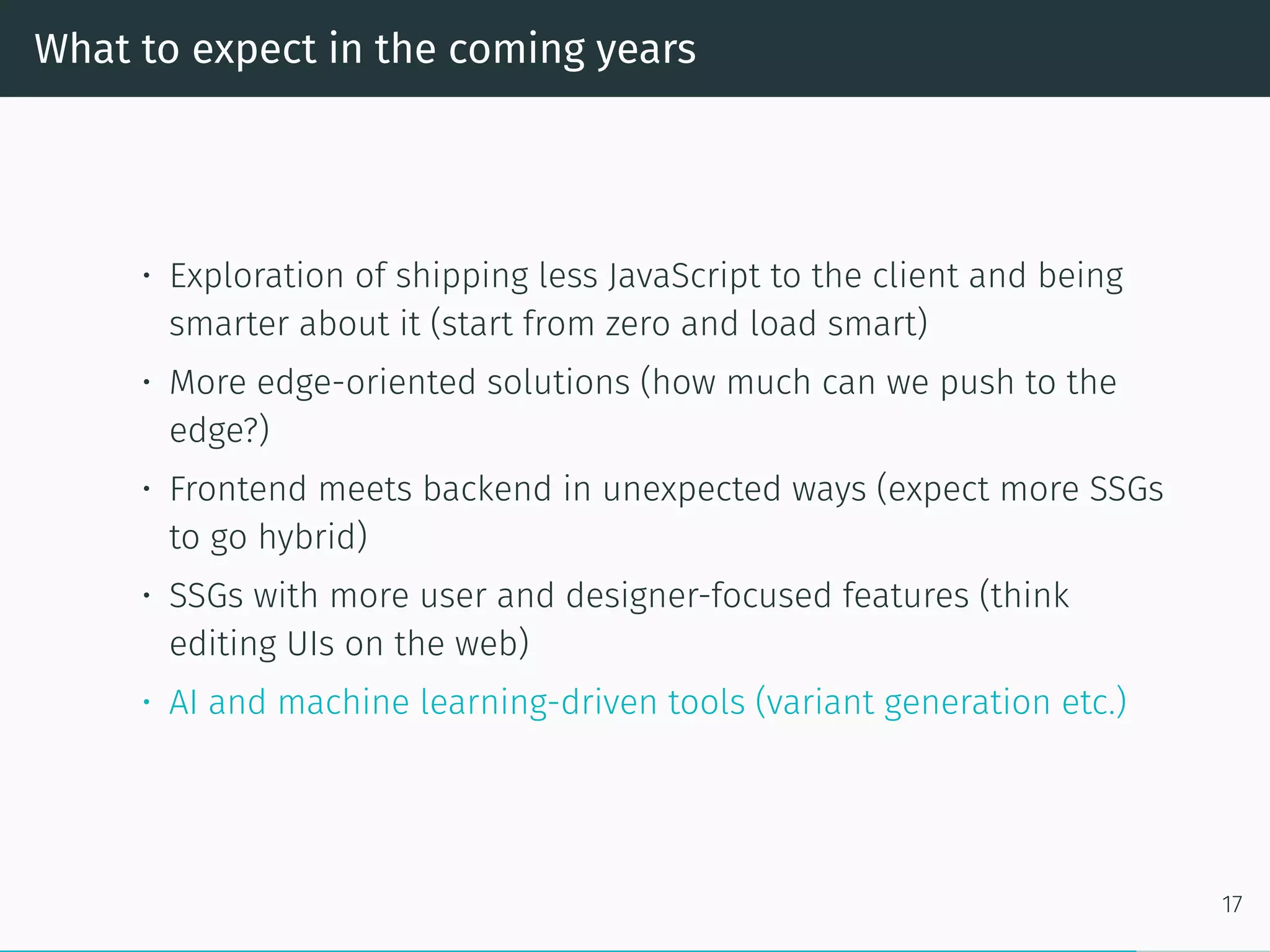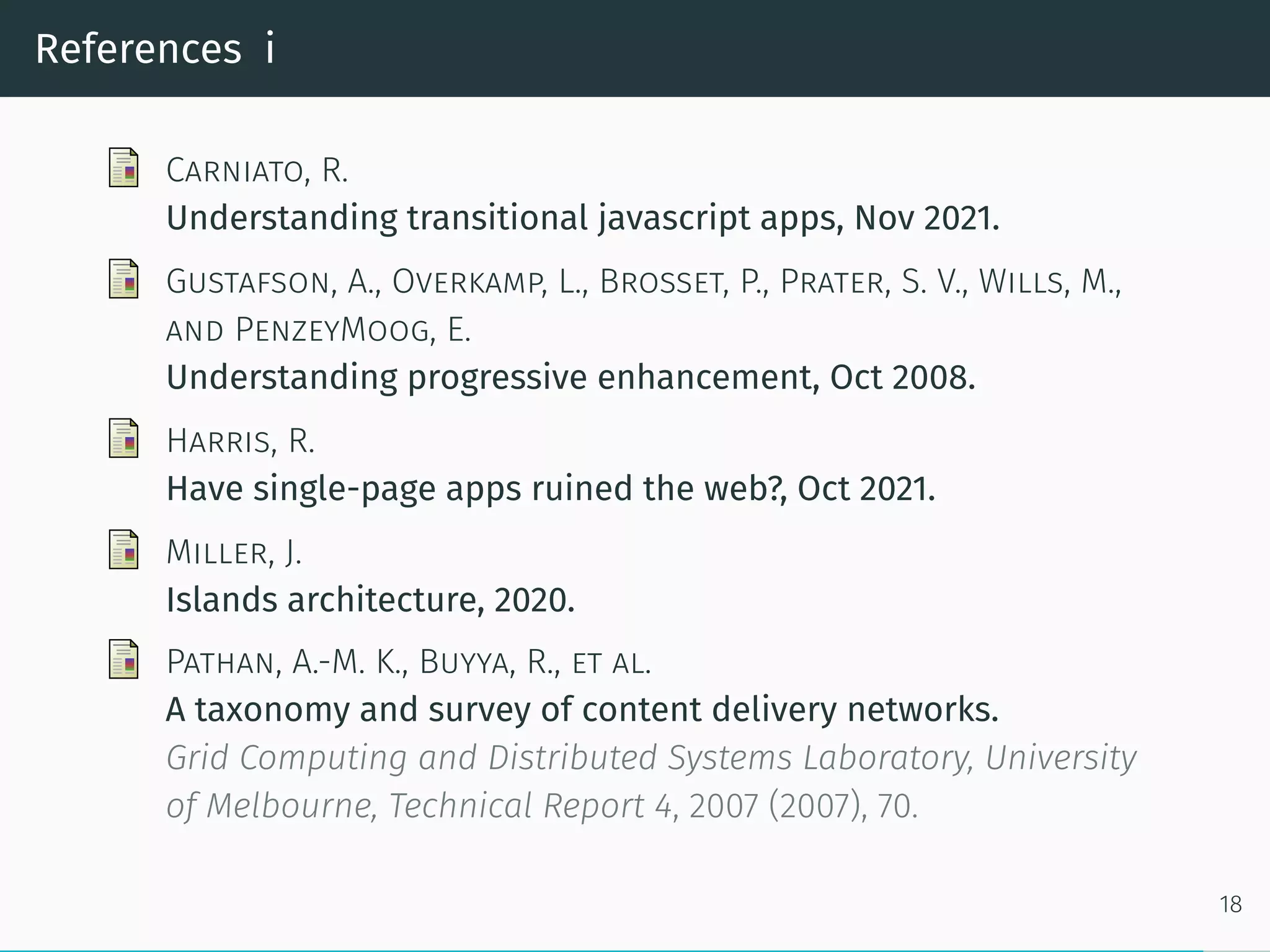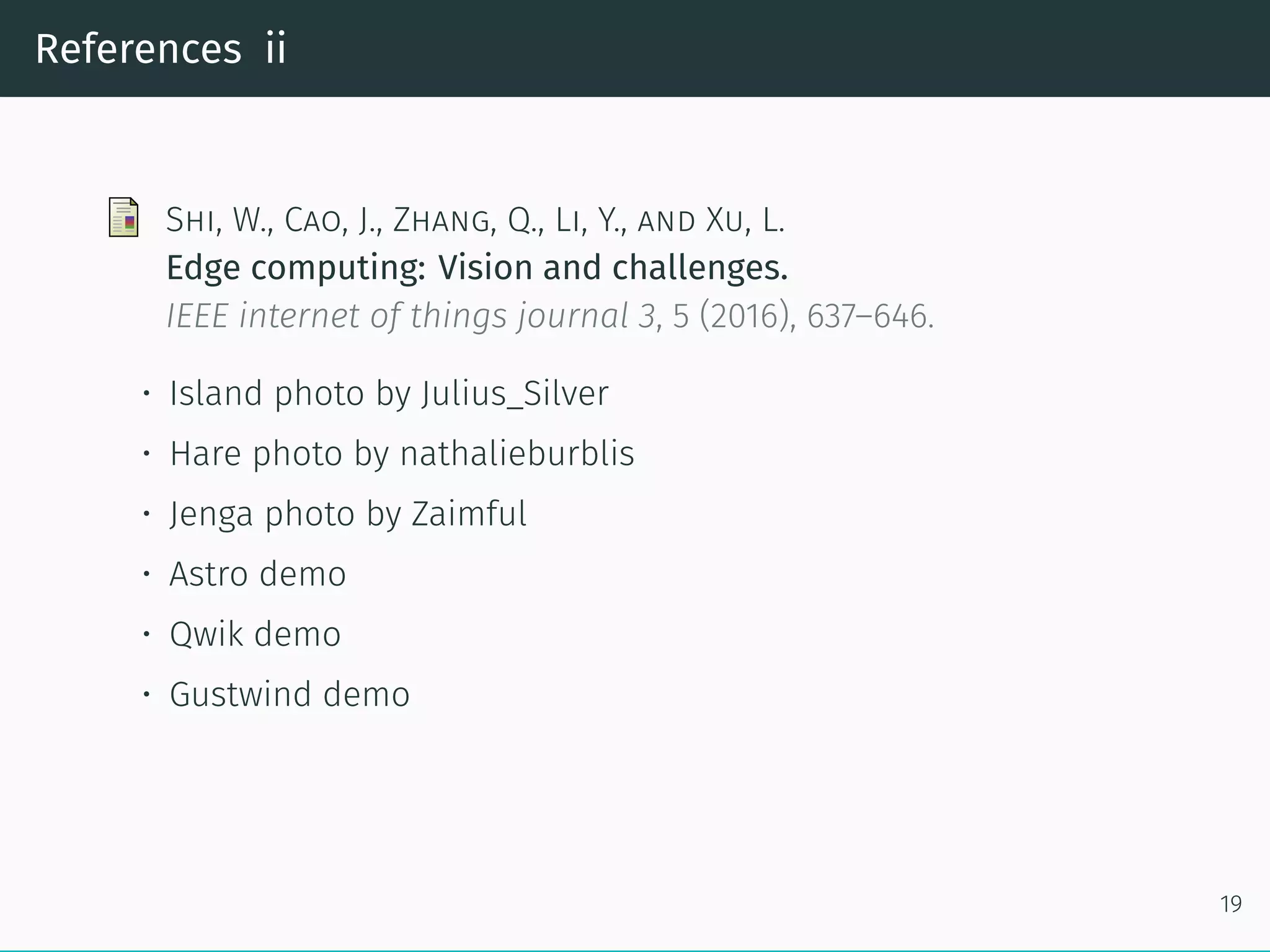The document discusses future trends in JavaScript frameworks, focusing on concepts like Transitional Web Applications (TWAs), Islands Architecture, and the new Gustwind solution built around JSON. It highlights advancements in providing efficient client-side loading and state management, alongside responsive design principles. Key insights include the move towards reduced JavaScript usage and the blending of frontend and backend technologies.
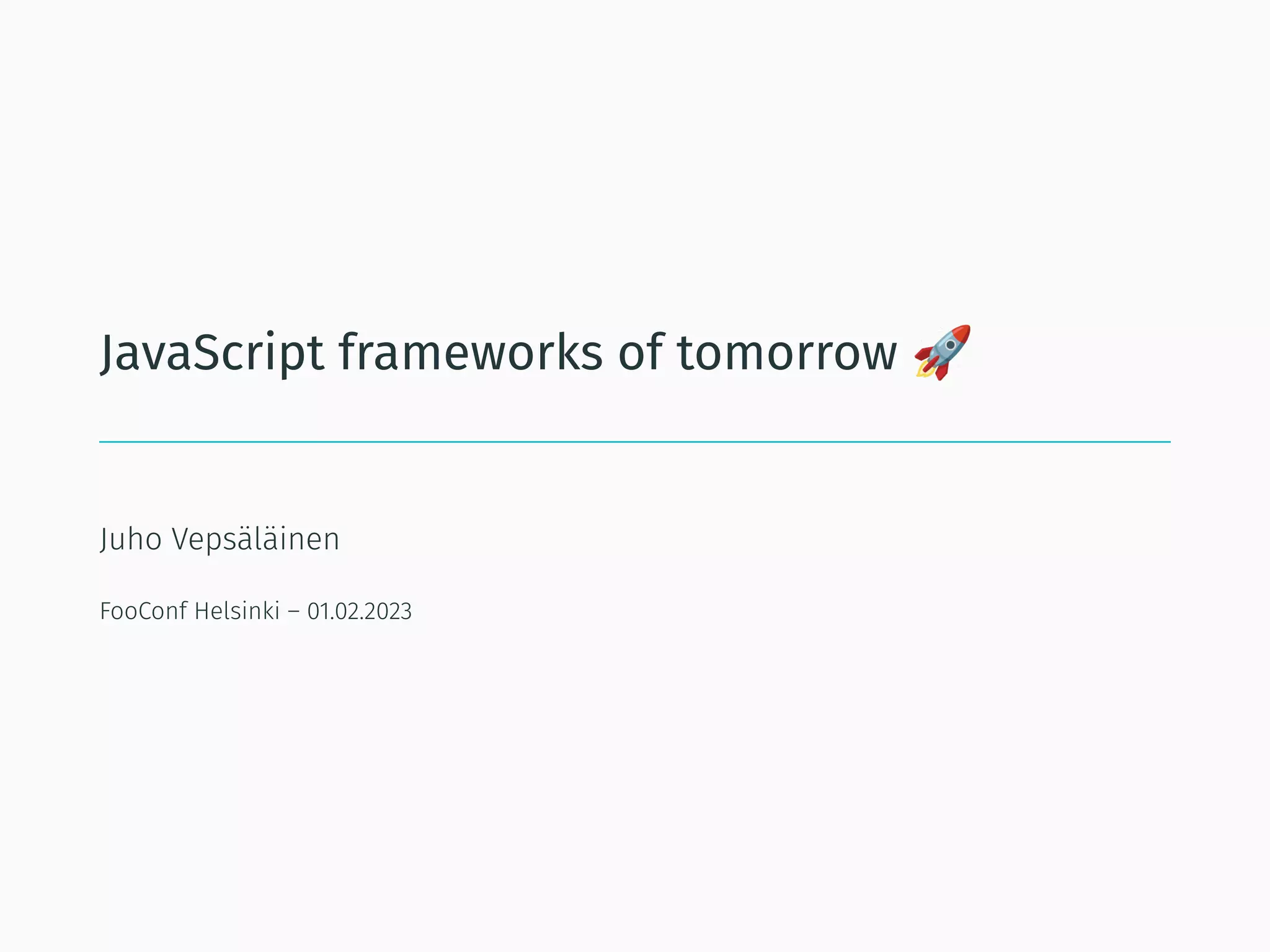
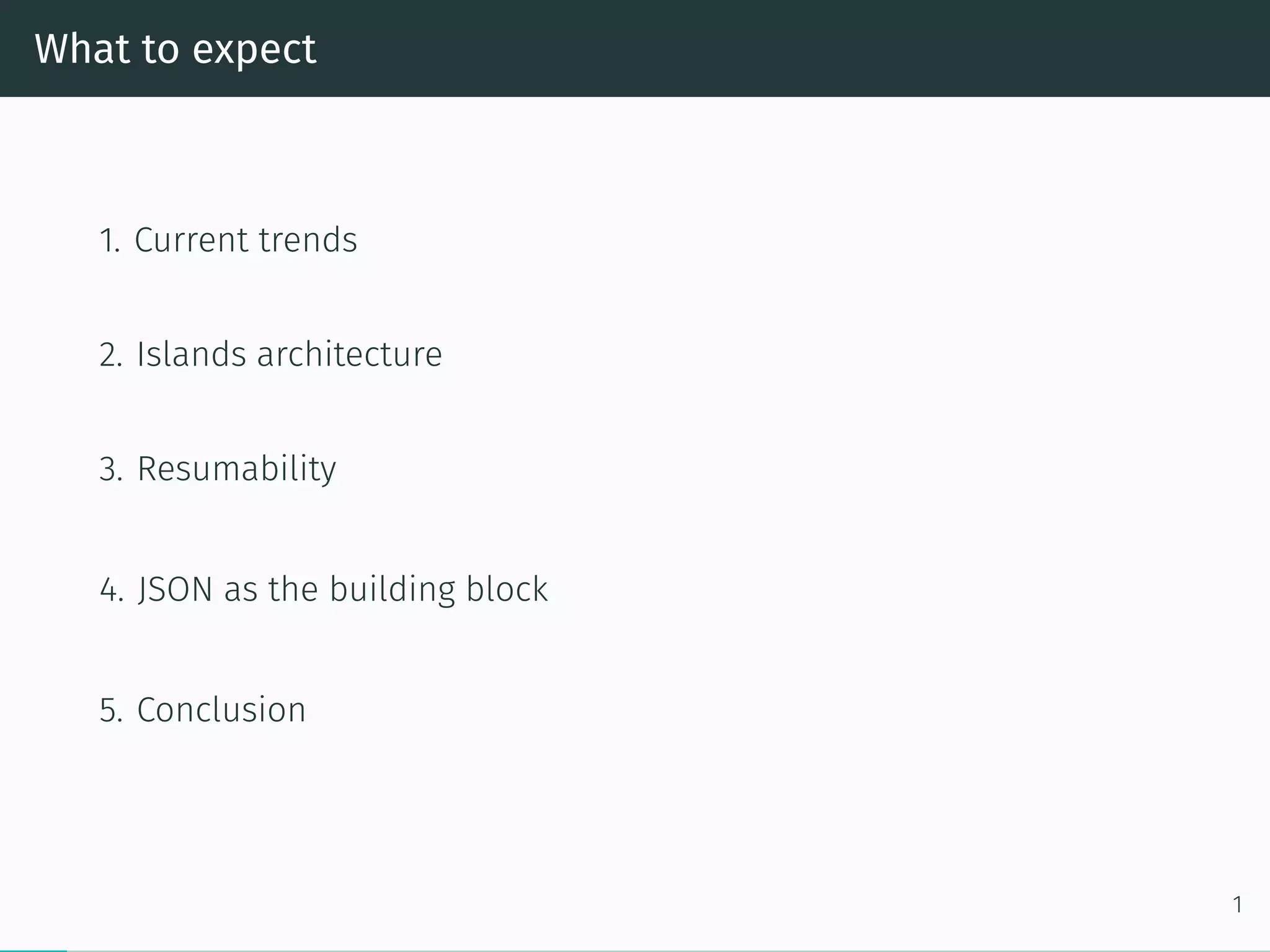

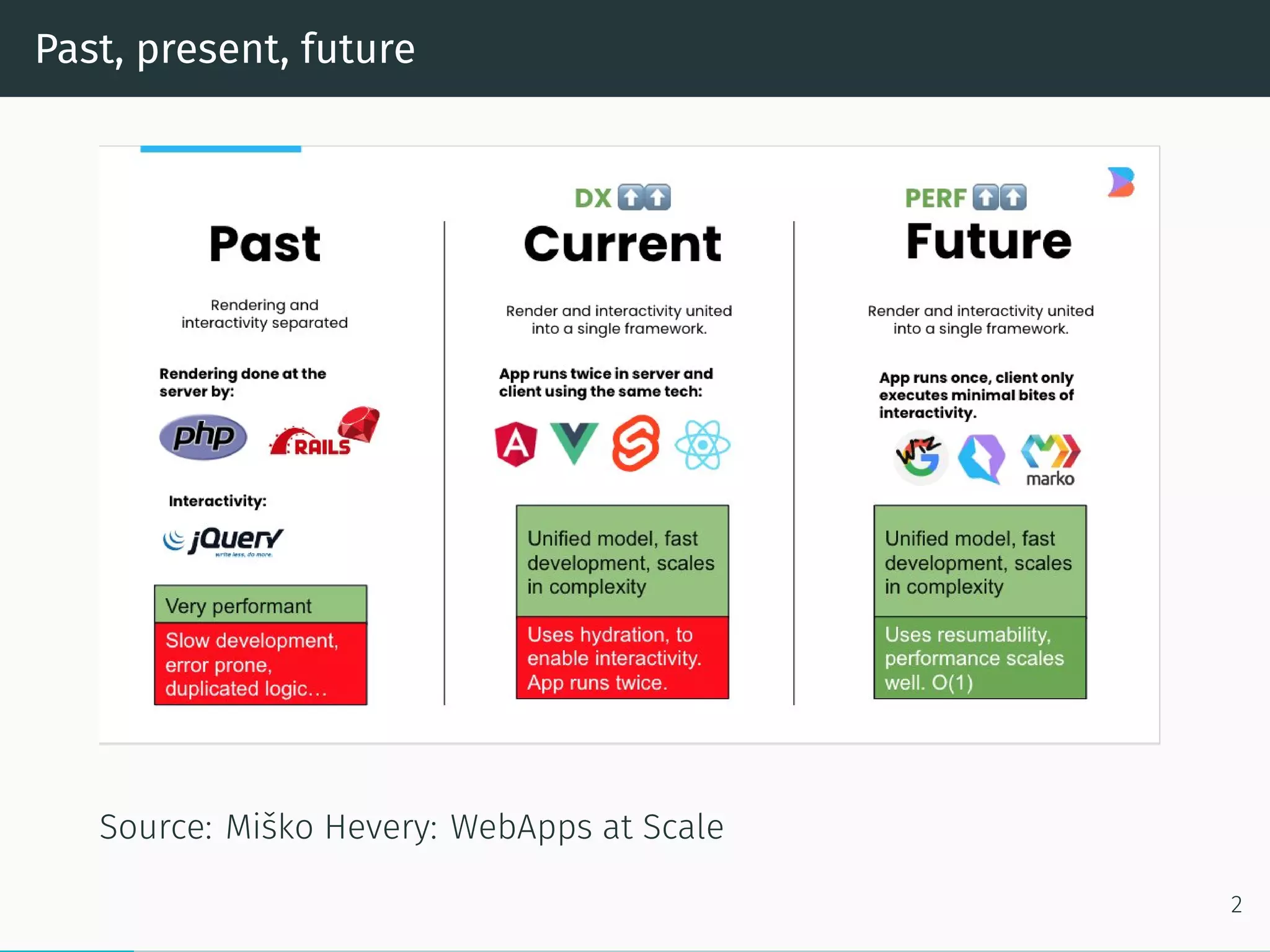
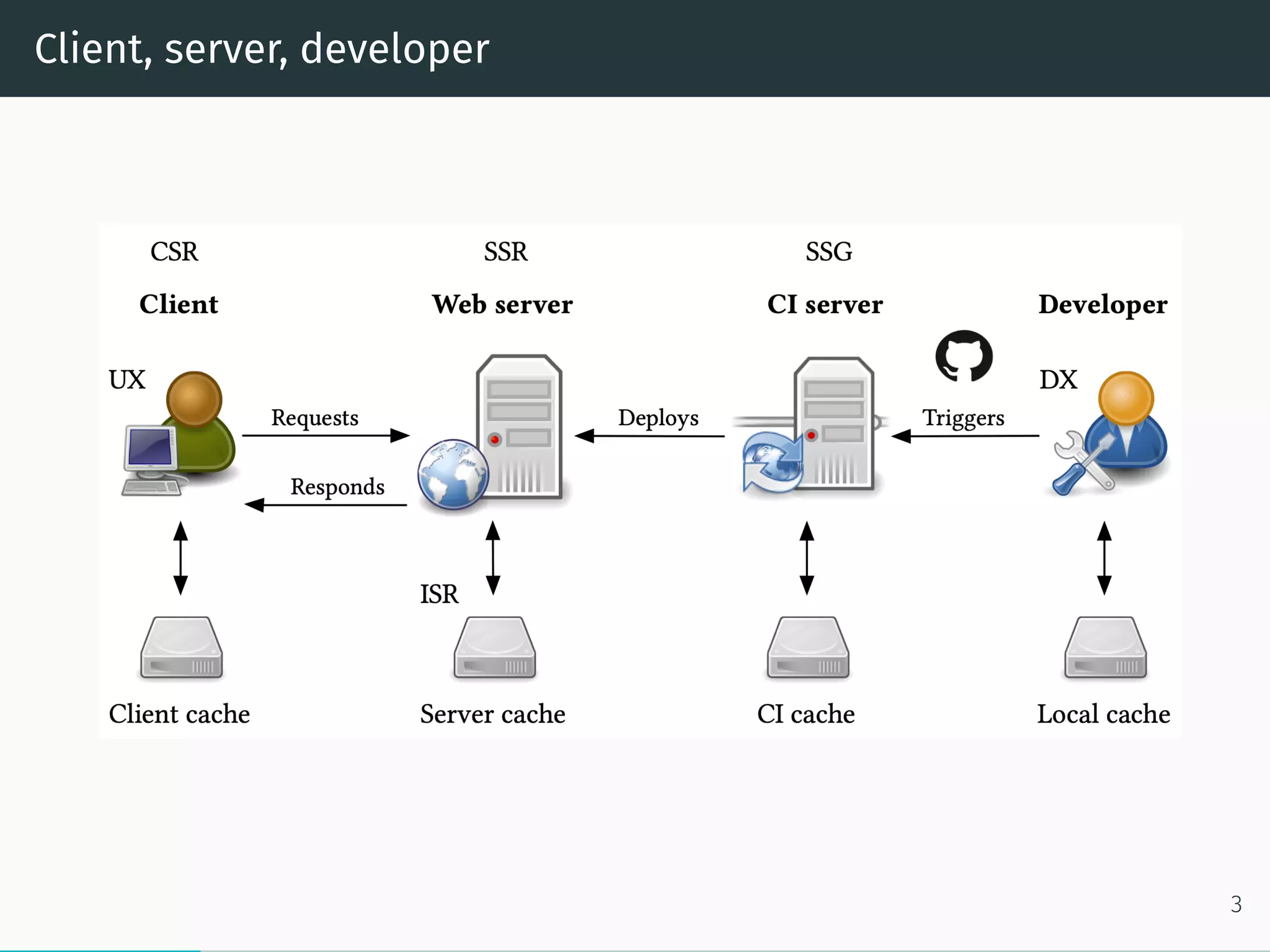
![Content delivery networks [5]
4](https://image.slidesharecdn.com/fooconfjavascriptframeworksoftomorrow-230201093653-b1992d7d/75/fooConf-JavaScript-frameworks-of-tomorrow-6-2048.jpg)
![Edge computing [6]
5](https://image.slidesharecdn.com/fooconfjavascriptframeworksoftomorrow-230201093653-b1992d7d/75/fooConf-JavaScript-frameworks-of-tomorrow-7-2048.jpg)
![Transitional web applications (TWAs) (2021) [3]
• In October 2021, Rich Harris proposed the idea of TWAs [3]
6](https://image.slidesharecdn.com/fooconfjavascriptframeworksoftomorrow-230201093653-b1992d7d/75/fooConf-JavaScript-frameworks-of-tomorrow-8-2048.jpg)
![Transitional web applications (TWAs) (2021) [3]
• In October 2021, Rich Harris proposed the idea of TWAs [3]
• TWA = pickBestIdeas(traditionalWeb, SPA)
6](https://image.slidesharecdn.com/fooconfjavascriptframeworksoftomorrow-230201093653-b1992d7d/75/fooConf-JavaScript-frameworks-of-tomorrow-9-2048.jpg)
![Transitional web applications (TWAs) (2021) [3]
• In October 2021, Rich Harris proposed the idea of TWAs [3]
• TWA = pickBestIdeas(traditionalWeb, SPA)
• TWAs utilize SSR for fast initial loading times while not relying
on JavaScript
6](https://image.slidesharecdn.com/fooconfjavascriptframeworksoftomorrow-230201093653-b1992d7d/75/fooConf-JavaScript-frameworks-of-tomorrow-10-2048.jpg)
![Transitional web applications (TWAs) (2021) [3]
• In October 2021, Rich Harris proposed the idea of TWAs [3]
• TWA = pickBestIdeas(traditionalWeb, SPA)
• TWAs utilize SSR for fast initial loading times while not relying
on JavaScript
• TWAs provide consistent experience and accessibility as a
built-in feature
6](https://image.slidesharecdn.com/fooconfjavascriptframeworksoftomorrow-230201093653-b1992d7d/75/fooConf-JavaScript-frameworks-of-tomorrow-11-2048.jpg)
![Progressive enhancement in a nutshell (2008) [2]
7](https://image.slidesharecdn.com/fooconfjavascriptframeworksoftomorrow-230201093653-b1992d7d/75/fooConf-JavaScript-frameworks-of-tomorrow-12-2048.jpg)
![Disappearing frameworks (2021) [1]
• Disappearing frameworks come with almost zero cost and vanish
from the application [1]
8](https://image.slidesharecdn.com/fooconfjavascriptframeworksoftomorrow-230201093653-b1992d7d/75/fooConf-JavaScript-frameworks-of-tomorrow-13-2048.jpg)
![Disappearing frameworks (2021) [1]
• Disappearing frameworks come with almost zero cost and vanish
from the application [1]
• Strong contrast to the current frameworks that load upfront and
rely on expensive hydration for SSR
8](https://image.slidesharecdn.com/fooconfjavascriptframeworksoftomorrow-230201093653-b1992d7d/75/fooConf-JavaScript-frameworks-of-tomorrow-14-2048.jpg)
![Disappearing frameworks (2021) [1]
• Disappearing frameworks come with almost zero cost and vanish
from the application [1]
• Strong contrast to the current frameworks that load upfront and
rely on expensive hydration for SSR
• Changing the viewpoint allows new technical solutions to
emerge
8](https://image.slidesharecdn.com/fooconfjavascriptframeworksoftomorrow-230201093653-b1992d7d/75/fooConf-JavaScript-frameworks-of-tomorrow-15-2048.jpg)

![Islands architecture (2019) [4]
9](https://image.slidesharecdn.com/fooconfjavascriptframeworksoftomorrow-230201093653-b1992d7d/75/fooConf-JavaScript-frameworks-of-tomorrow-17-2048.jpg)
